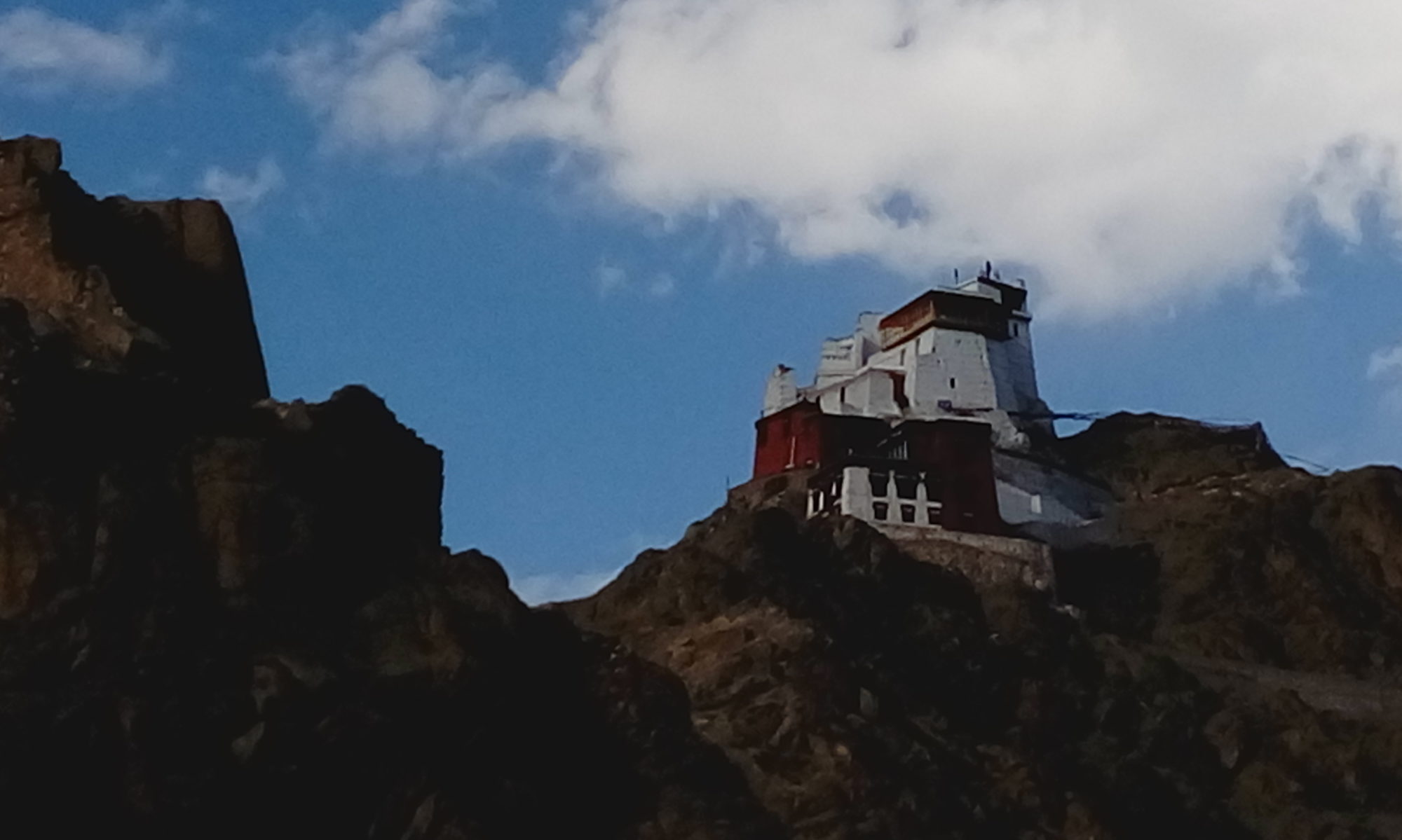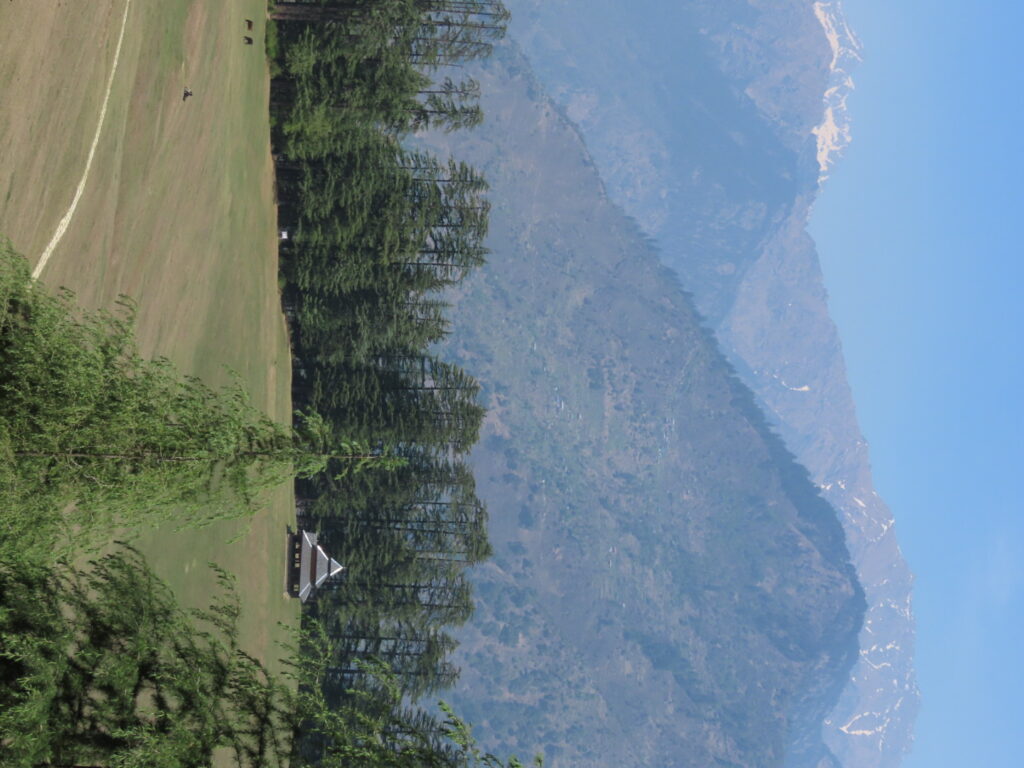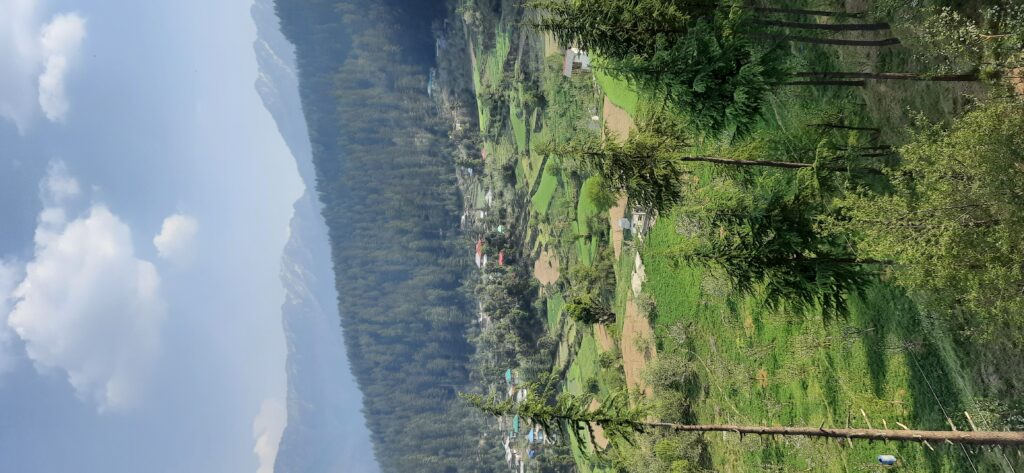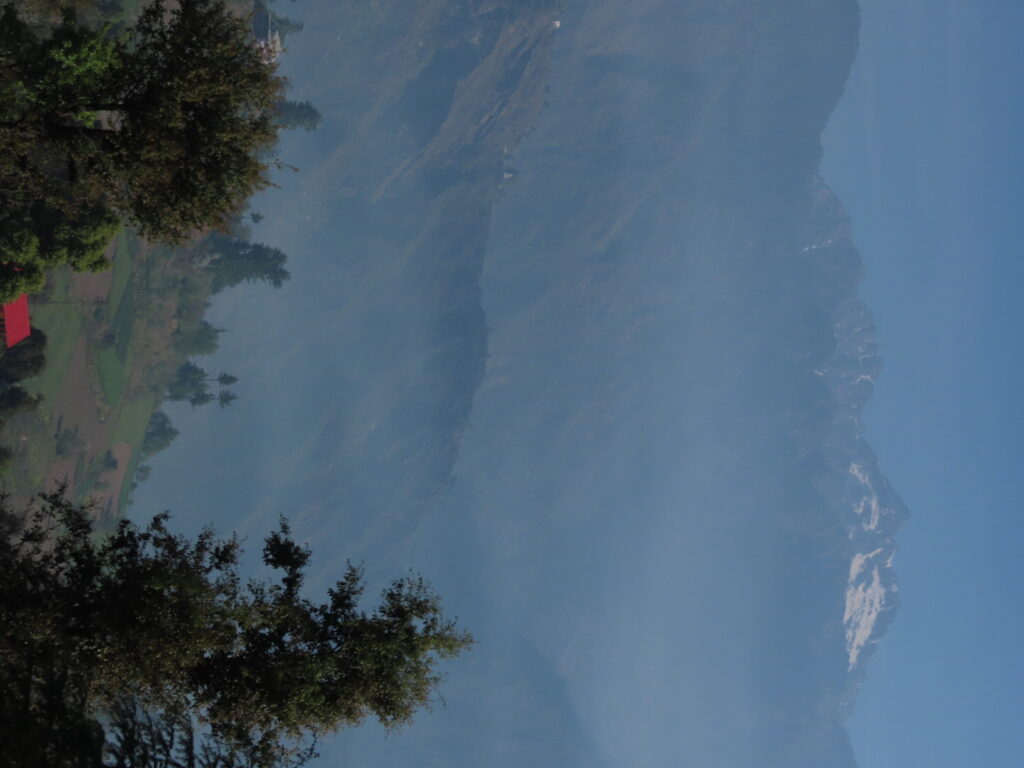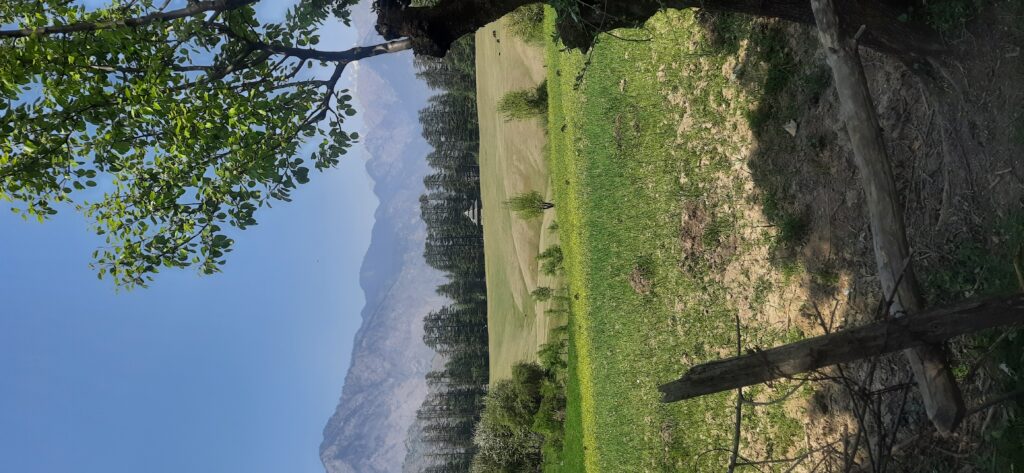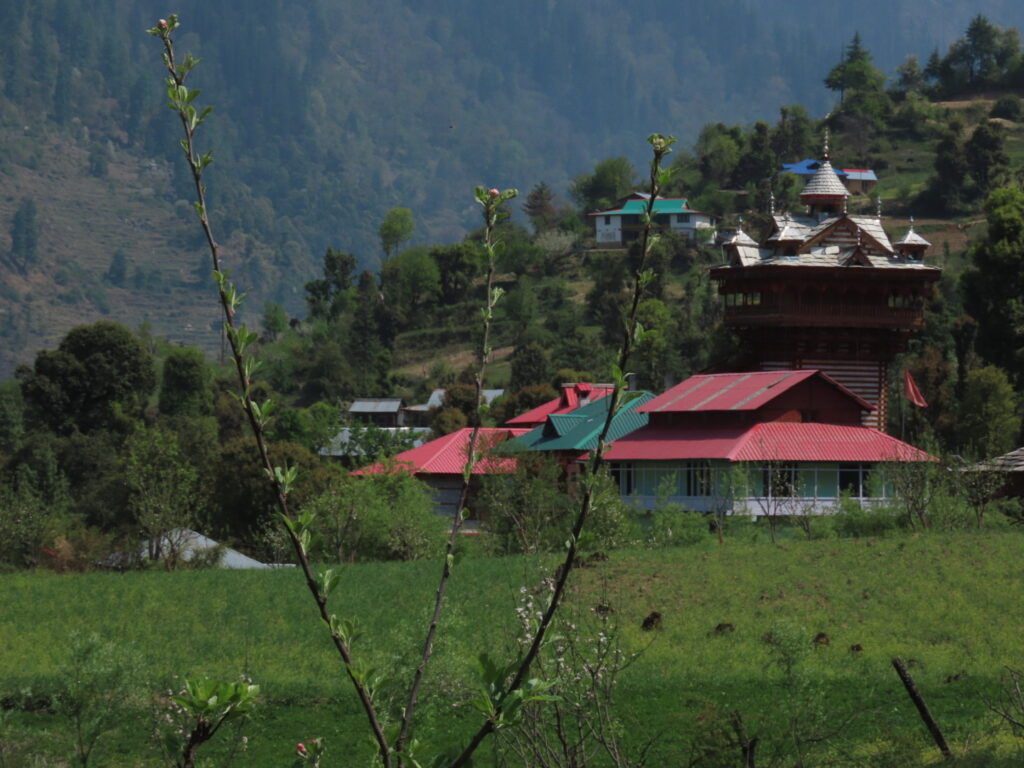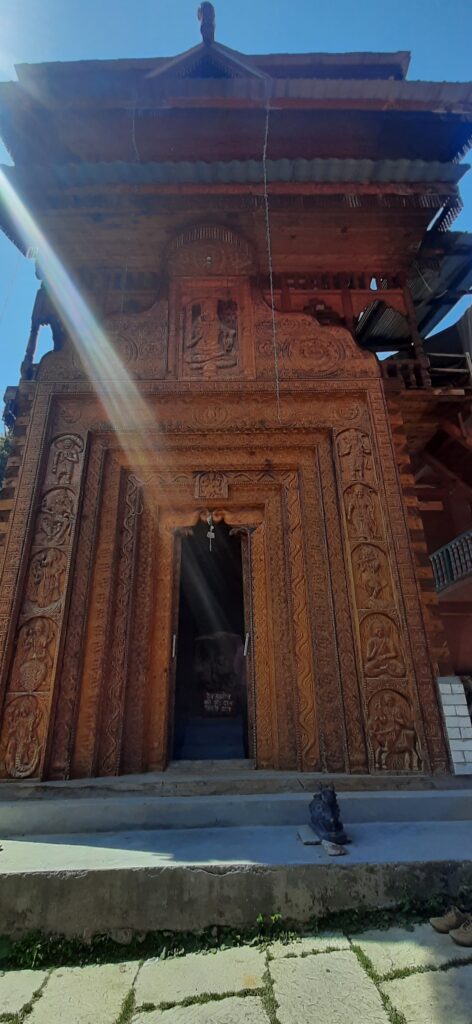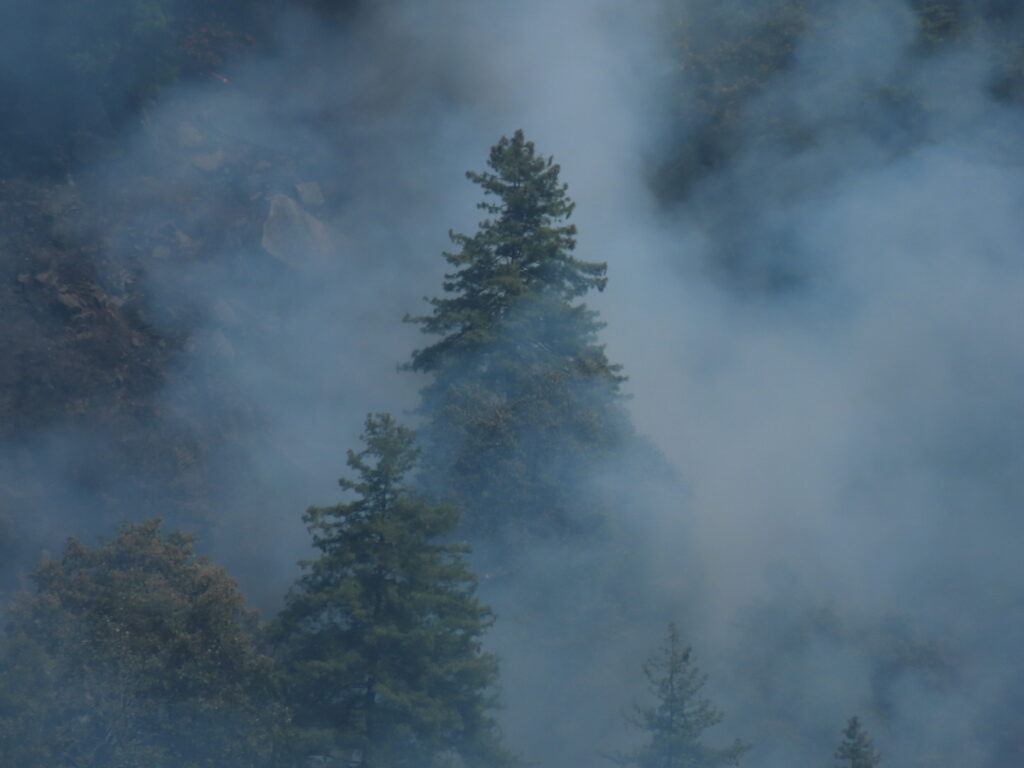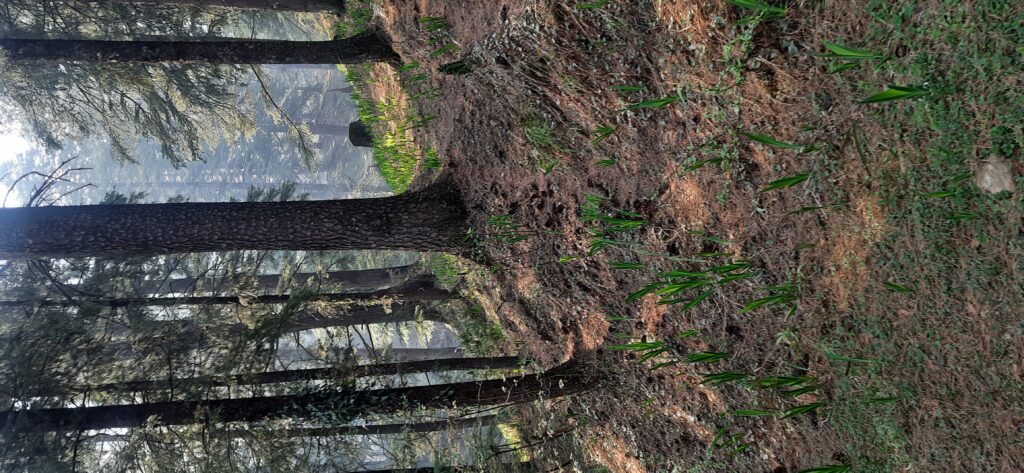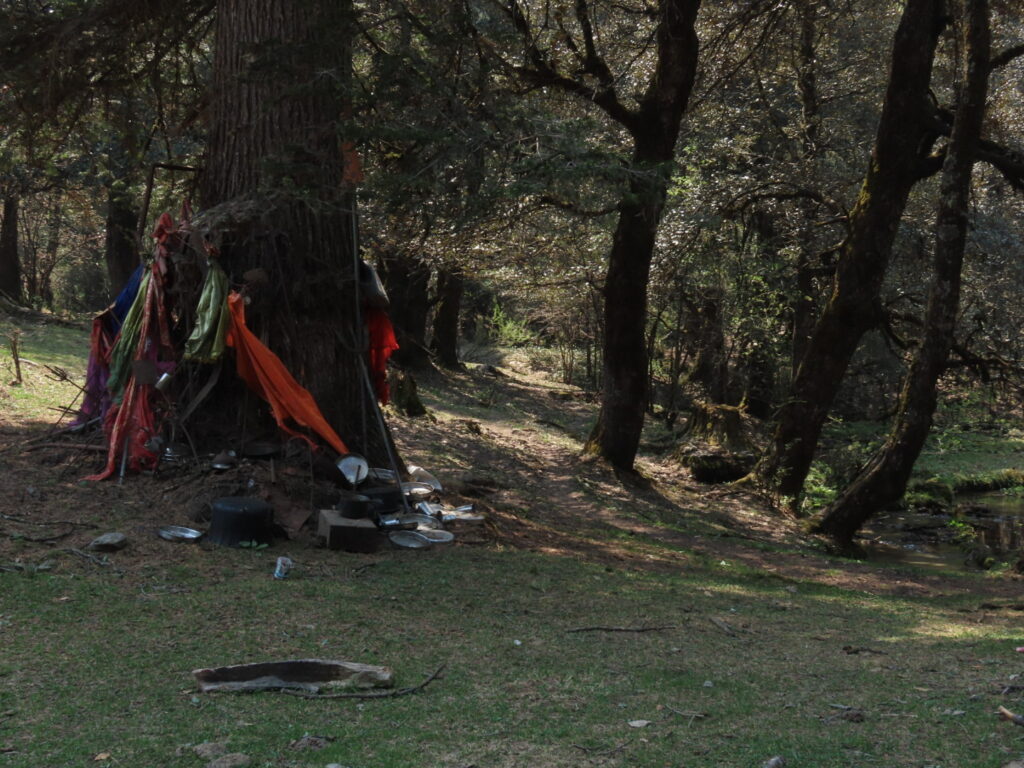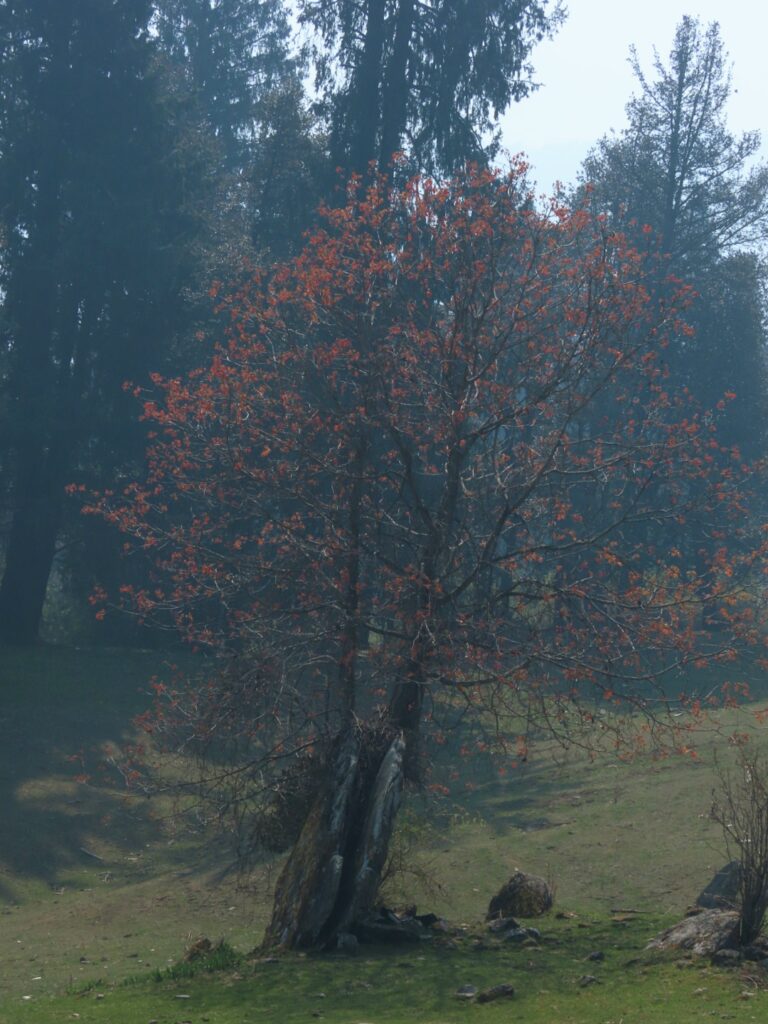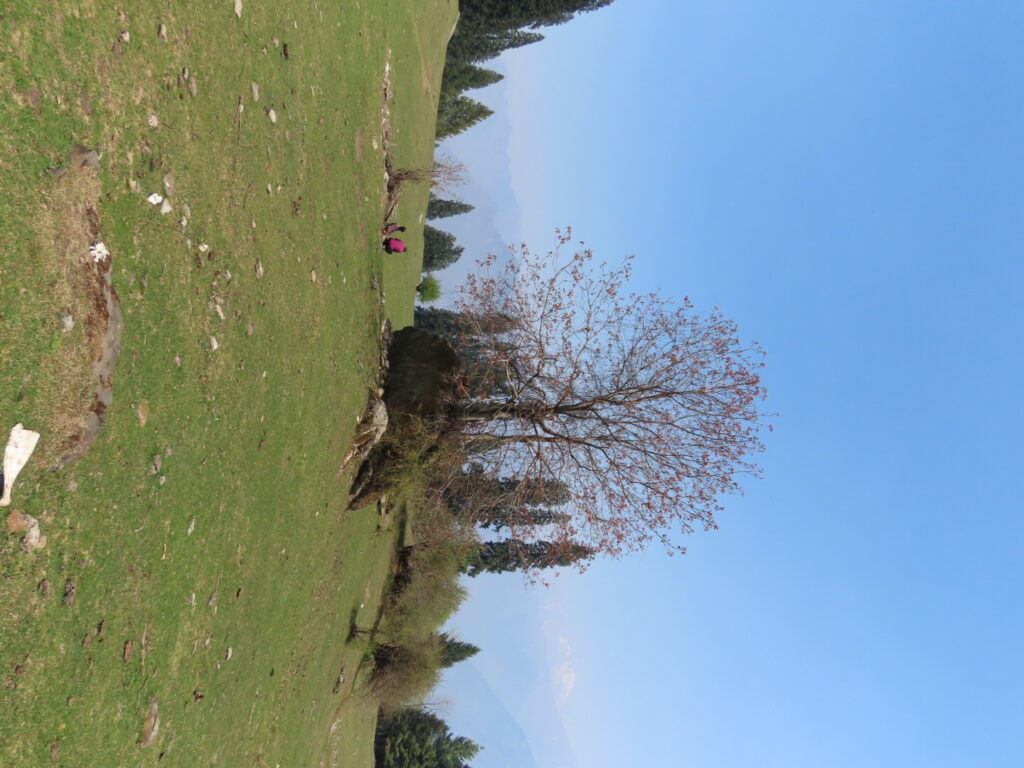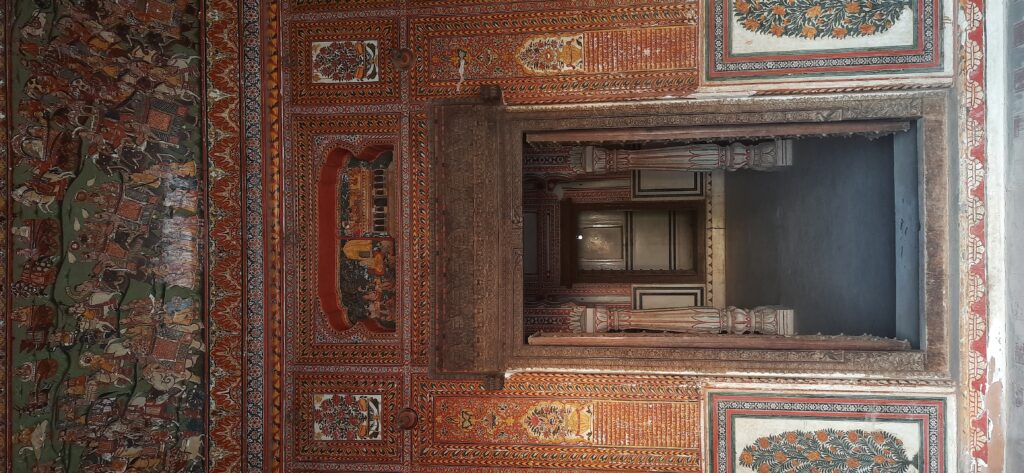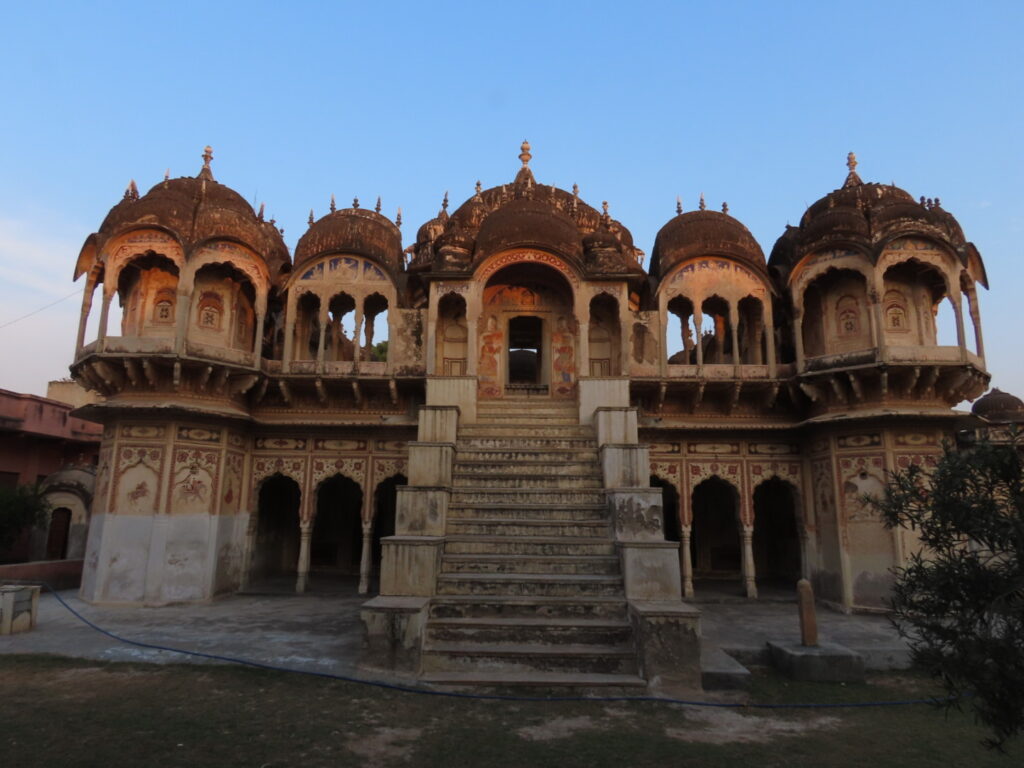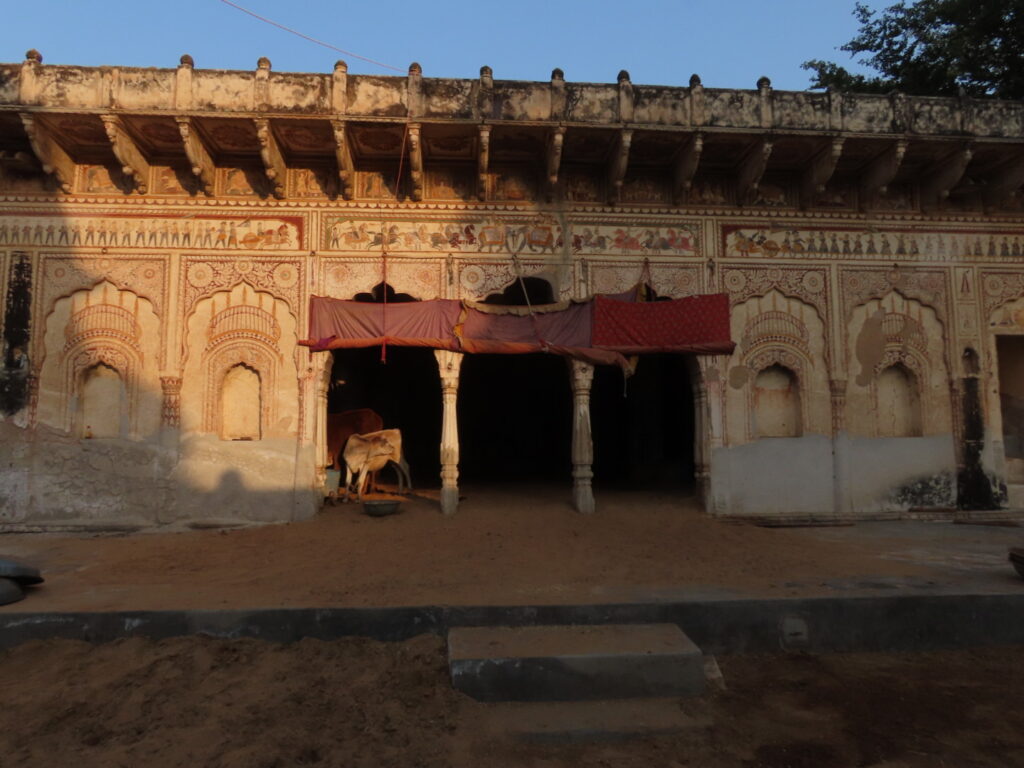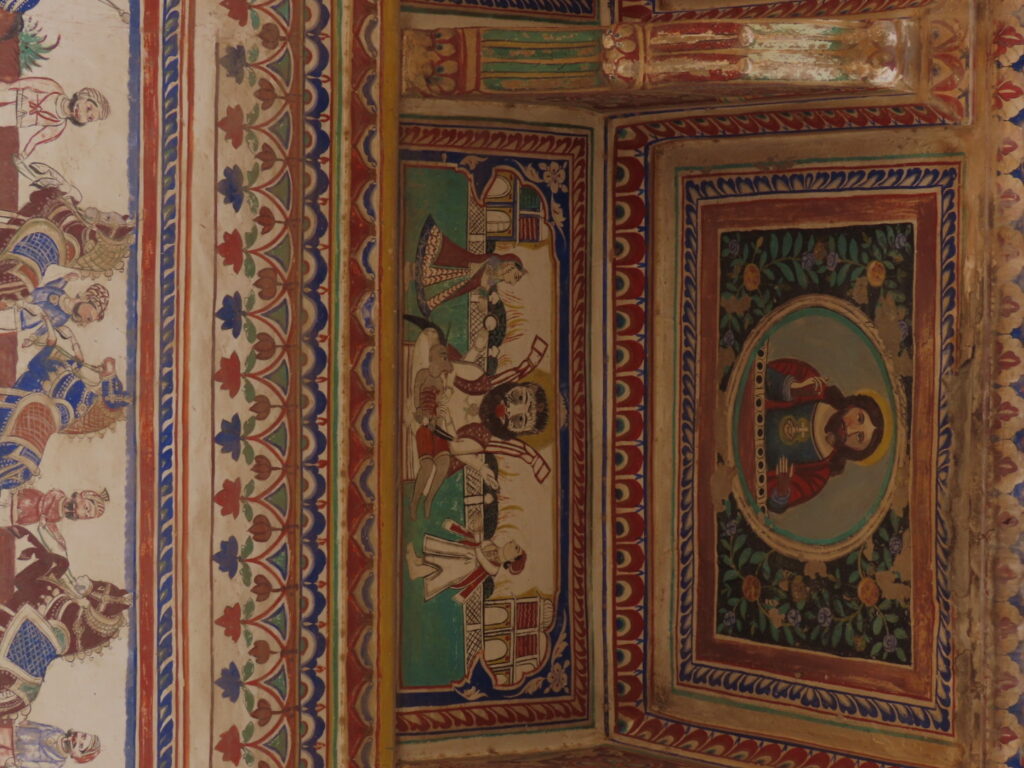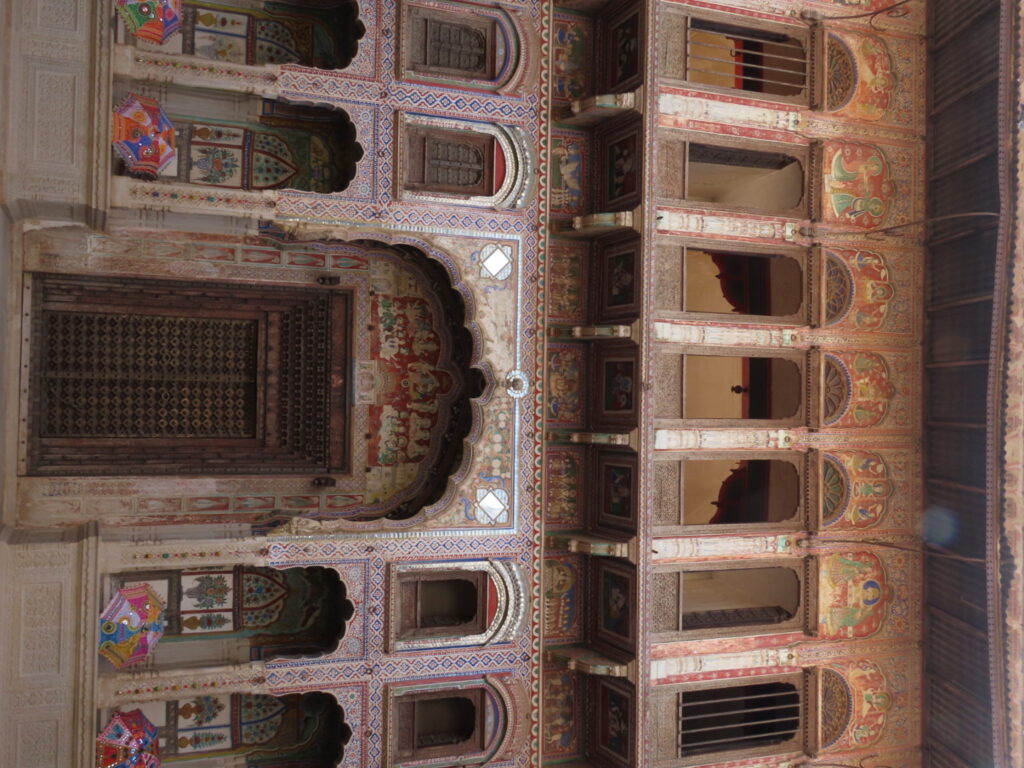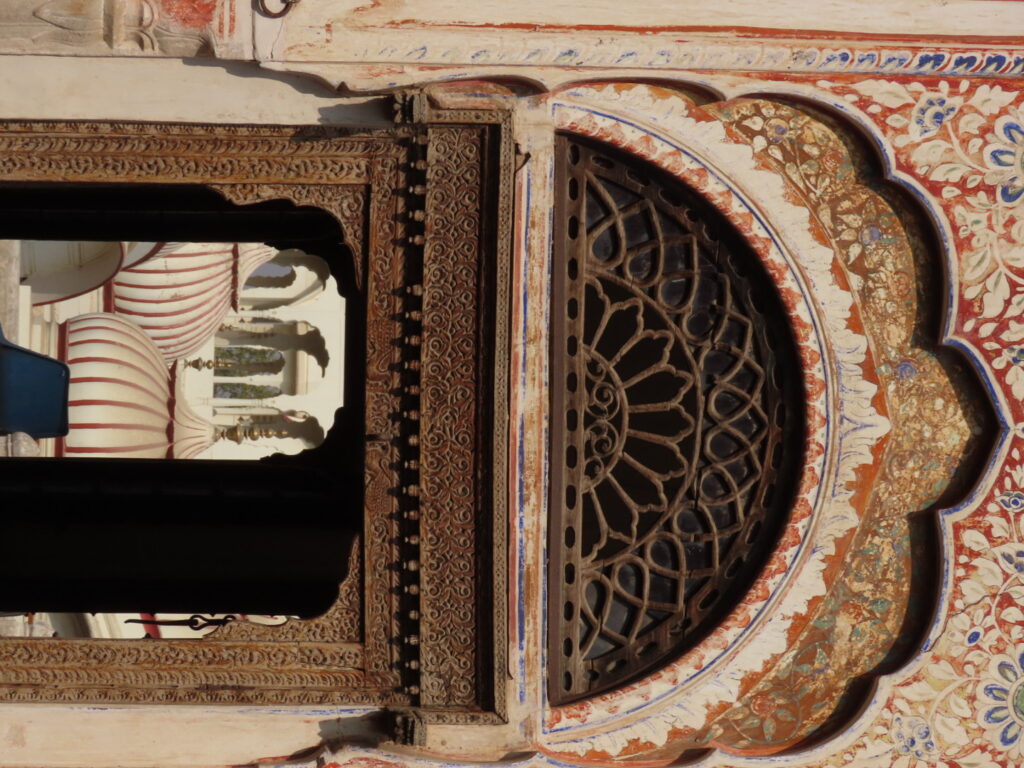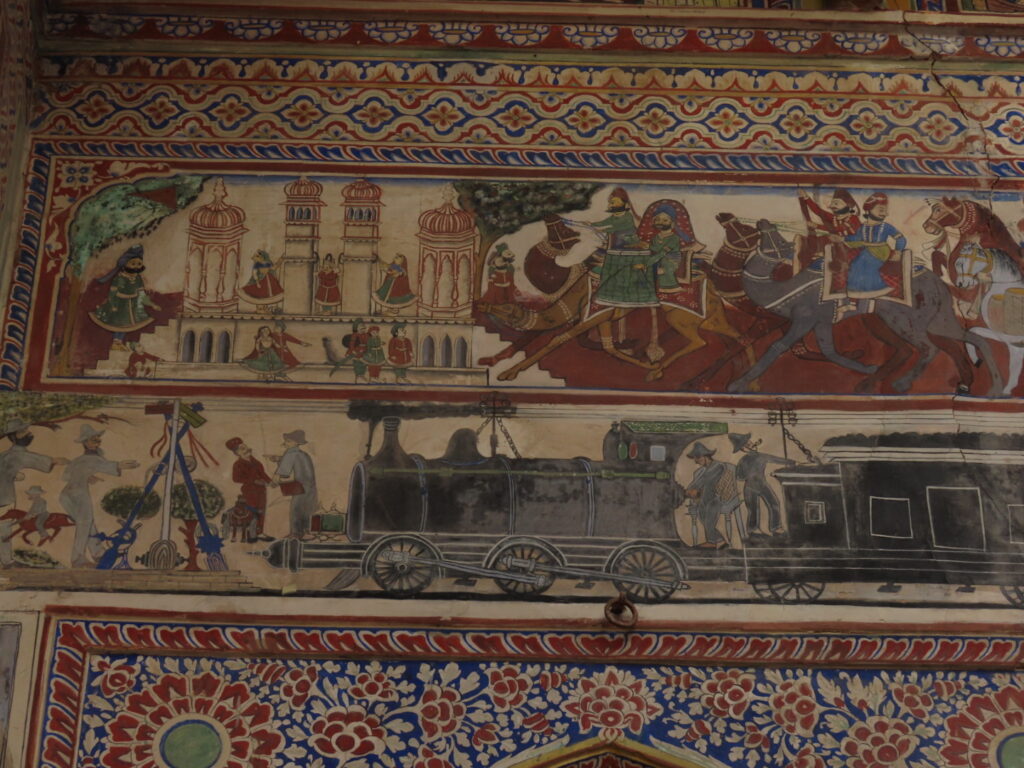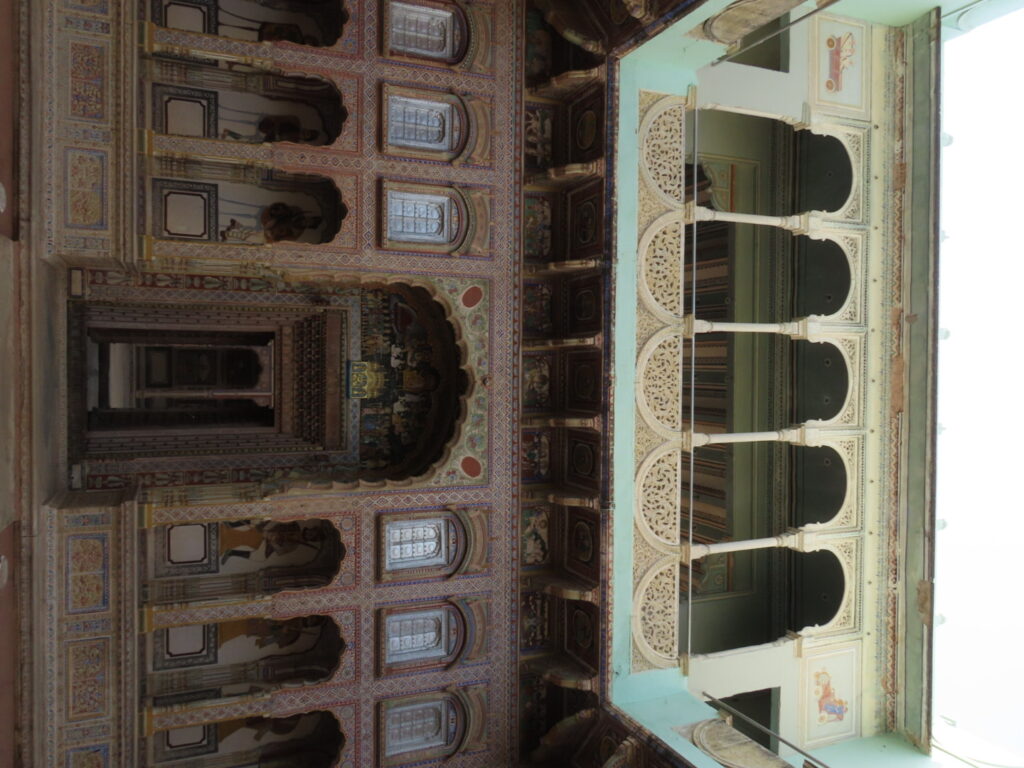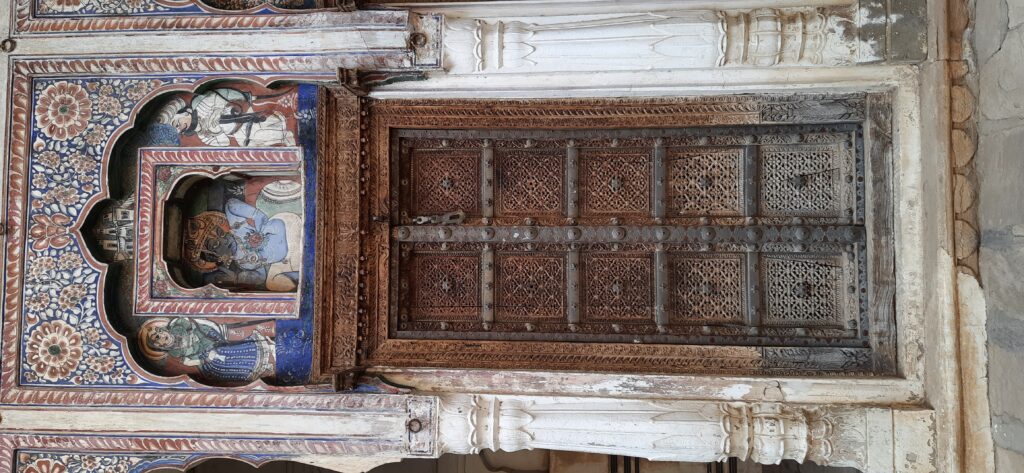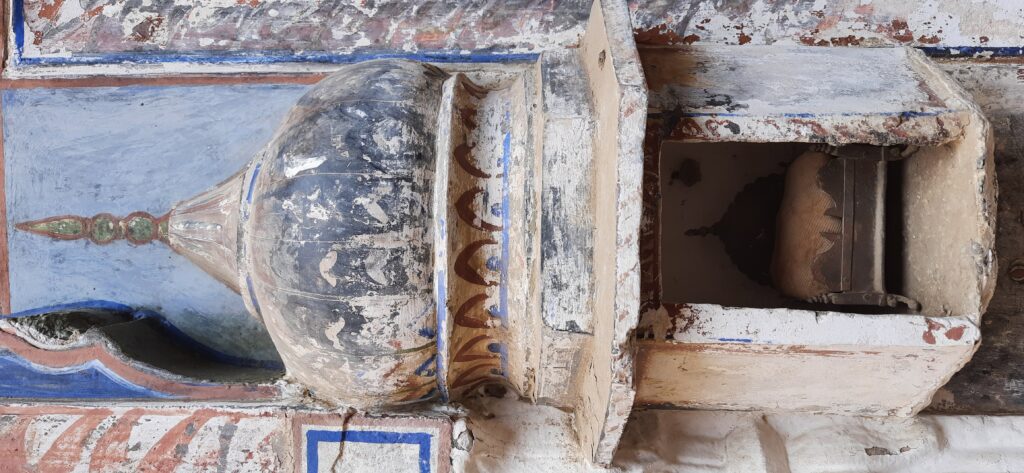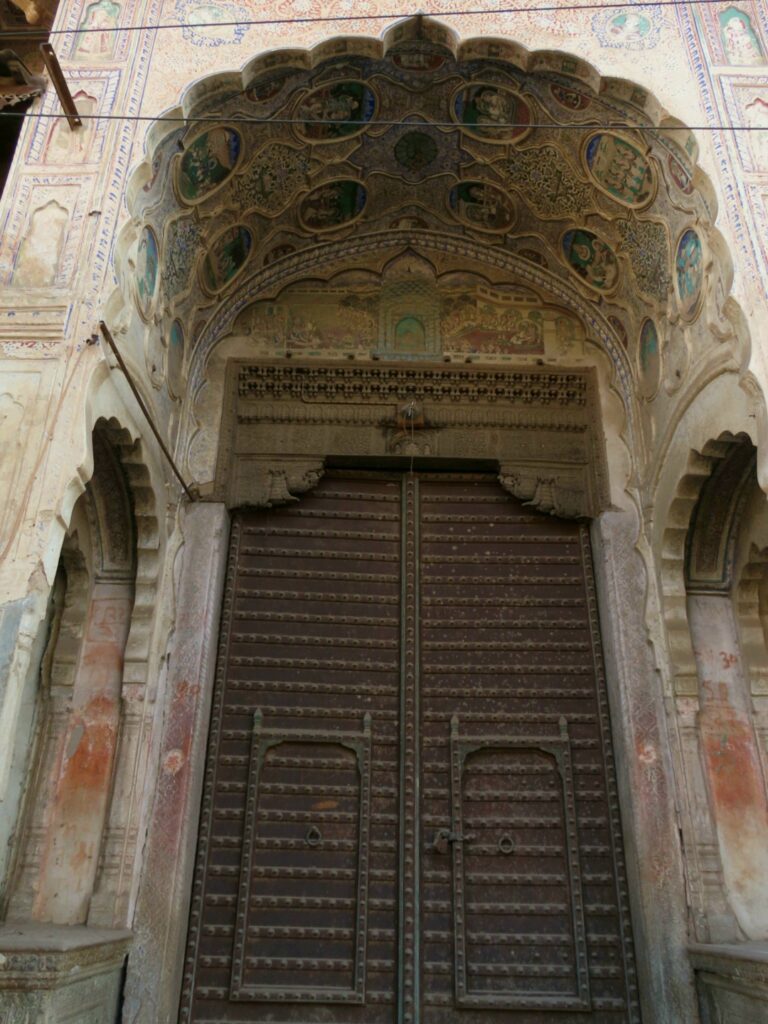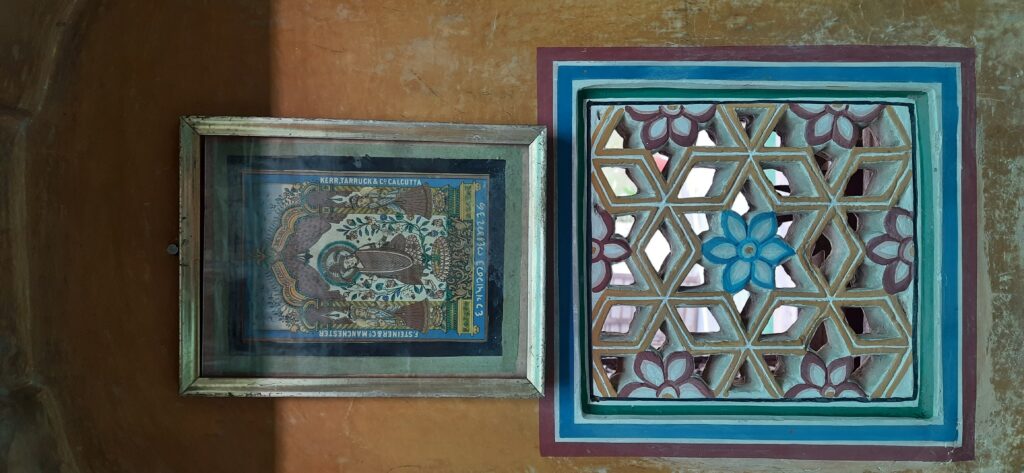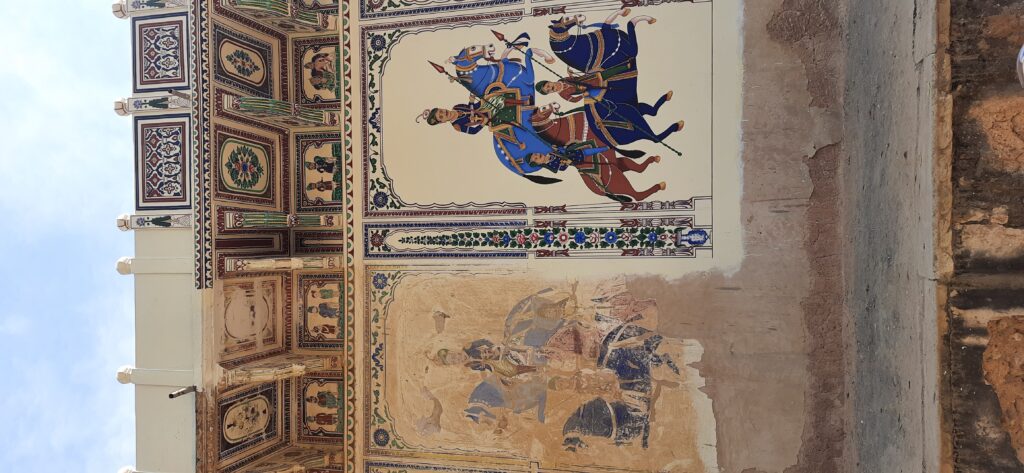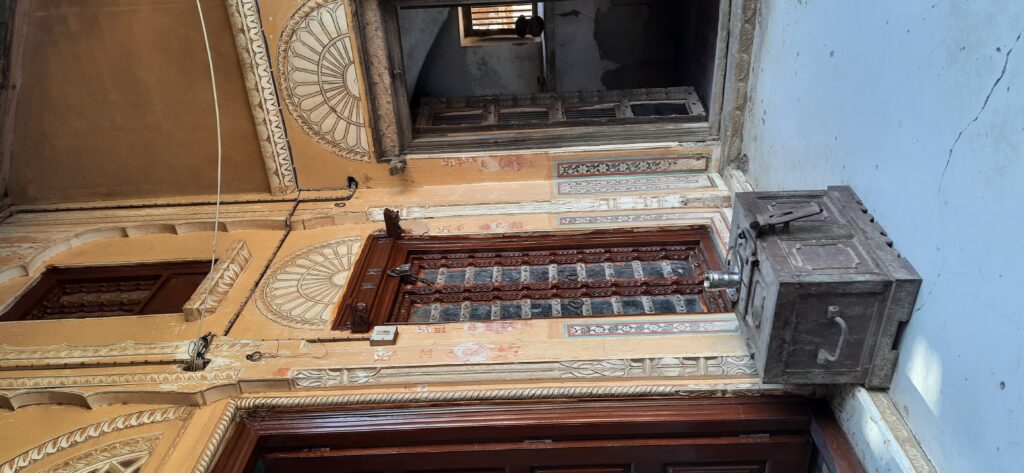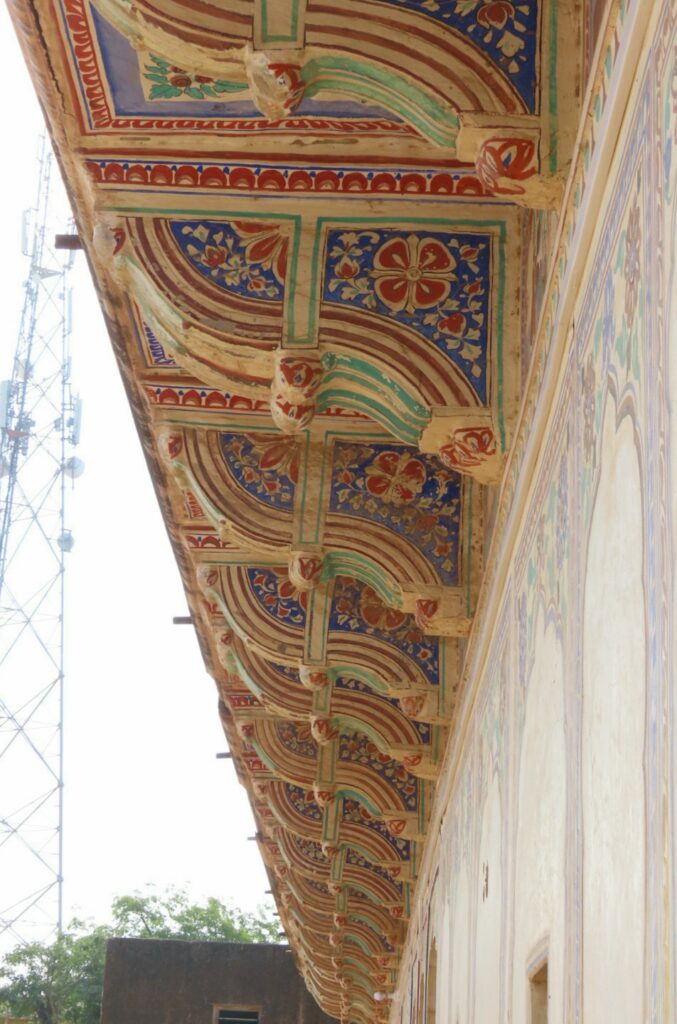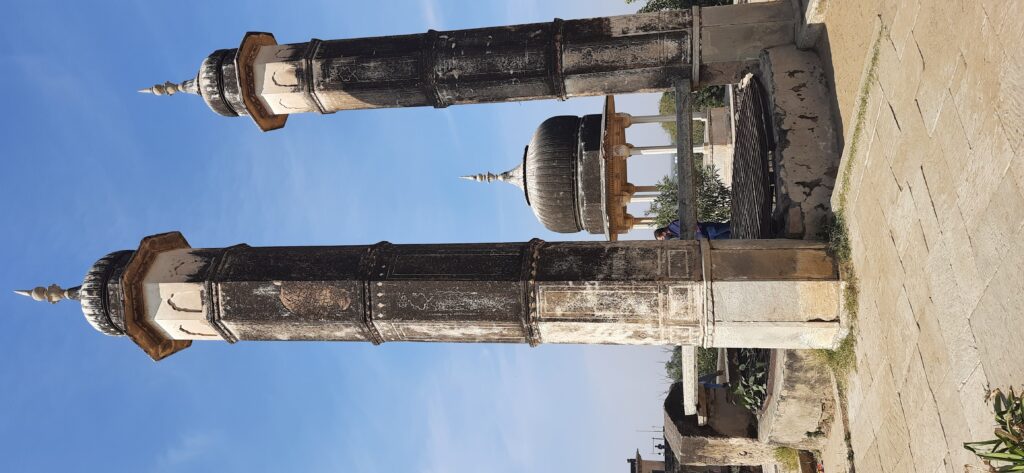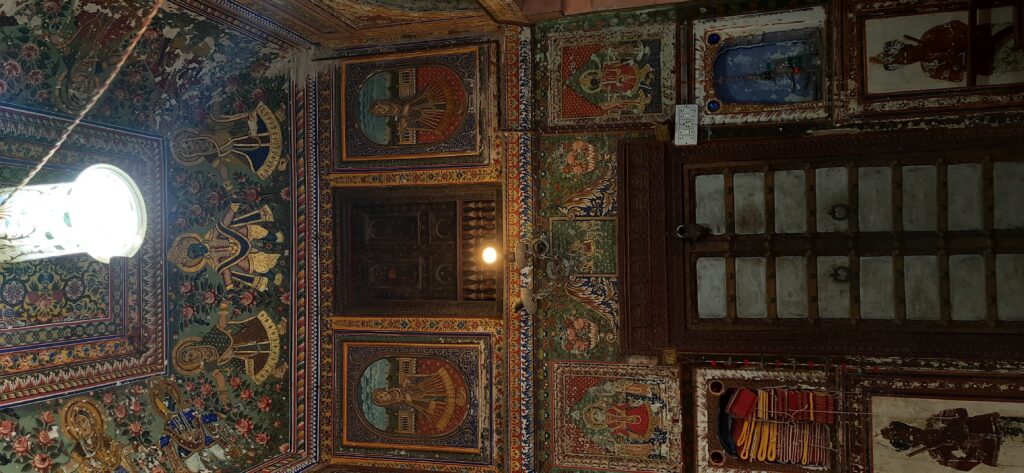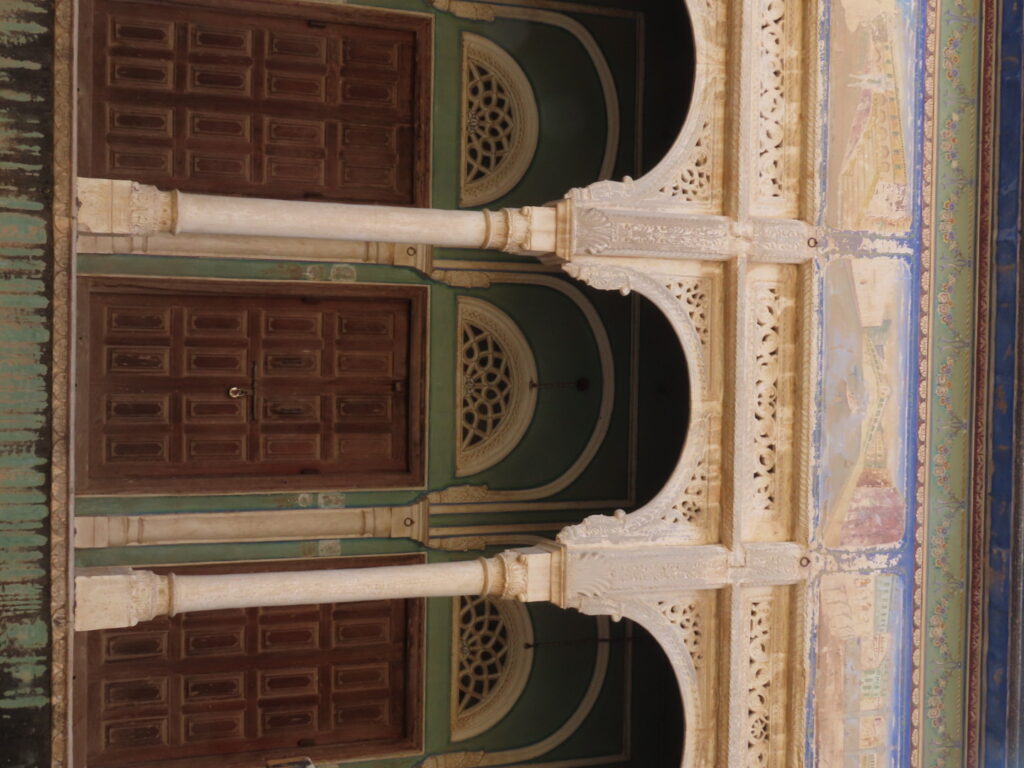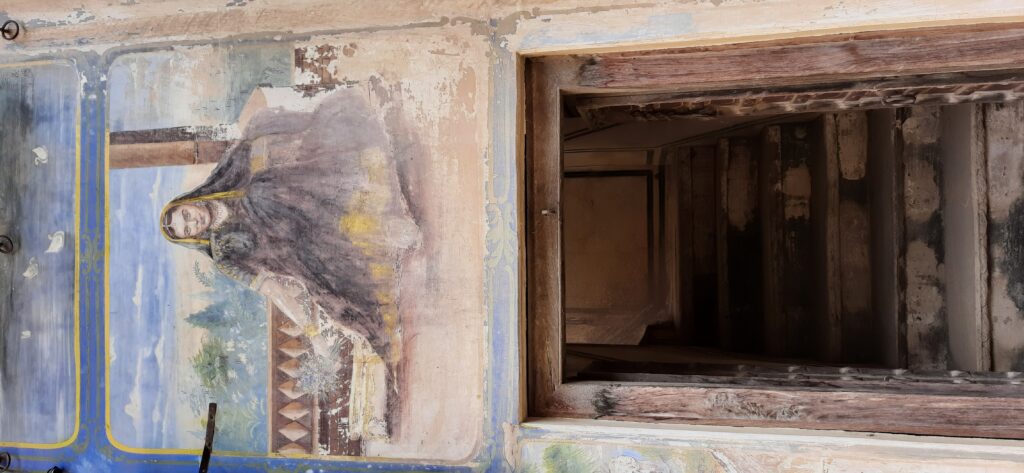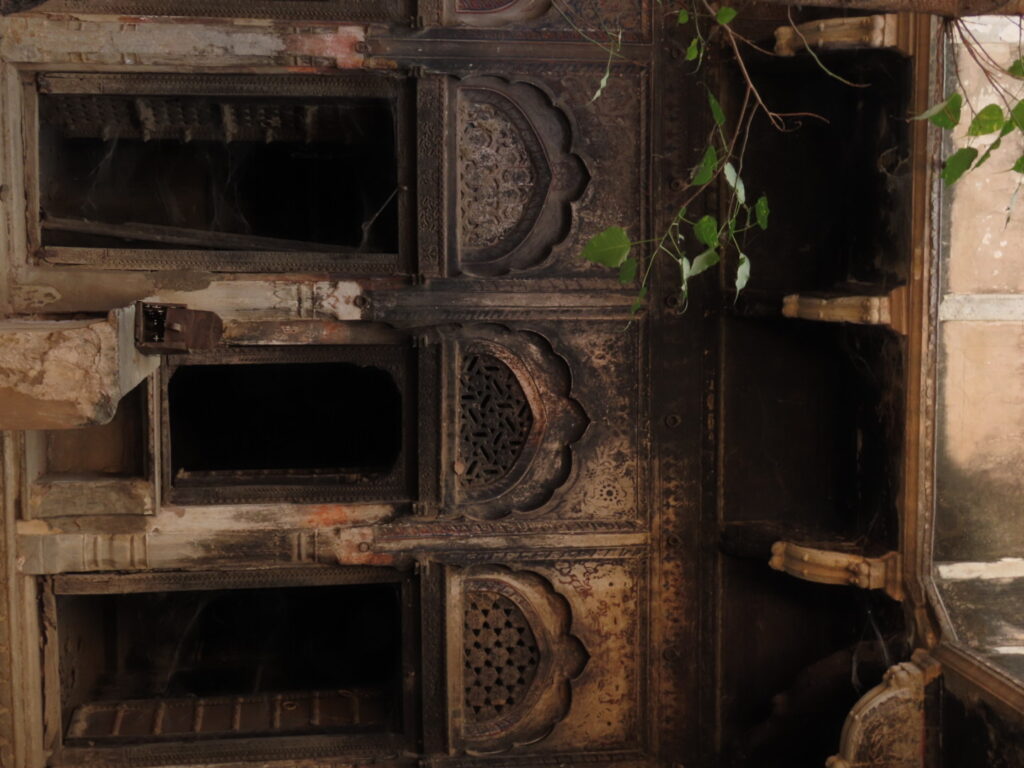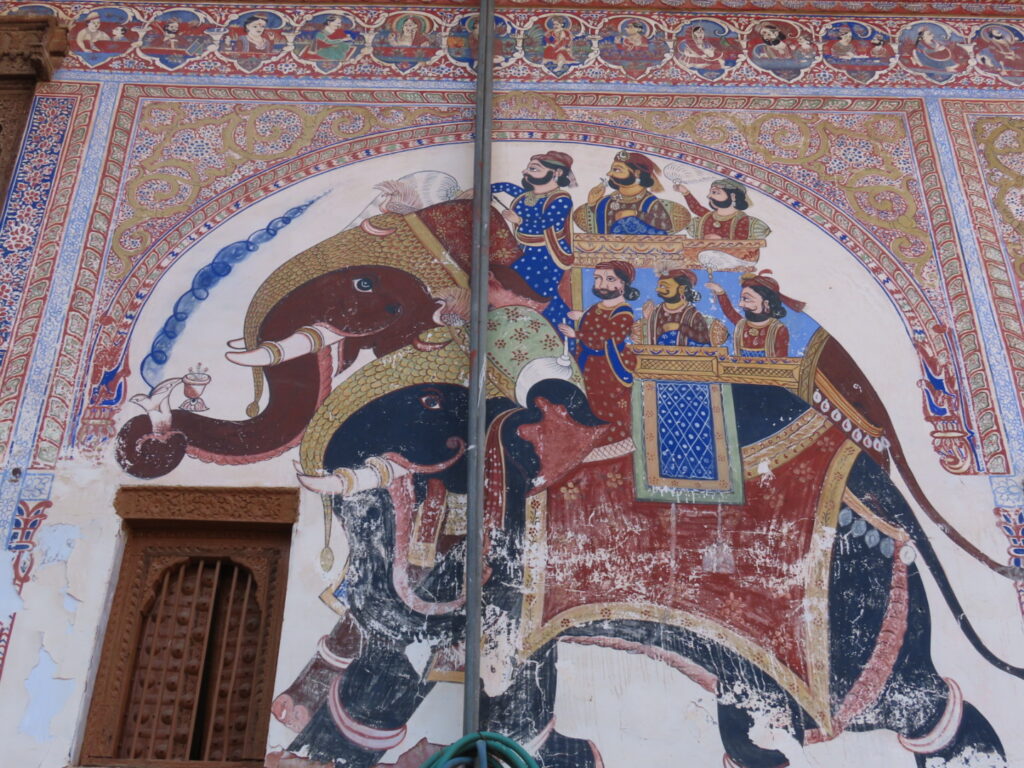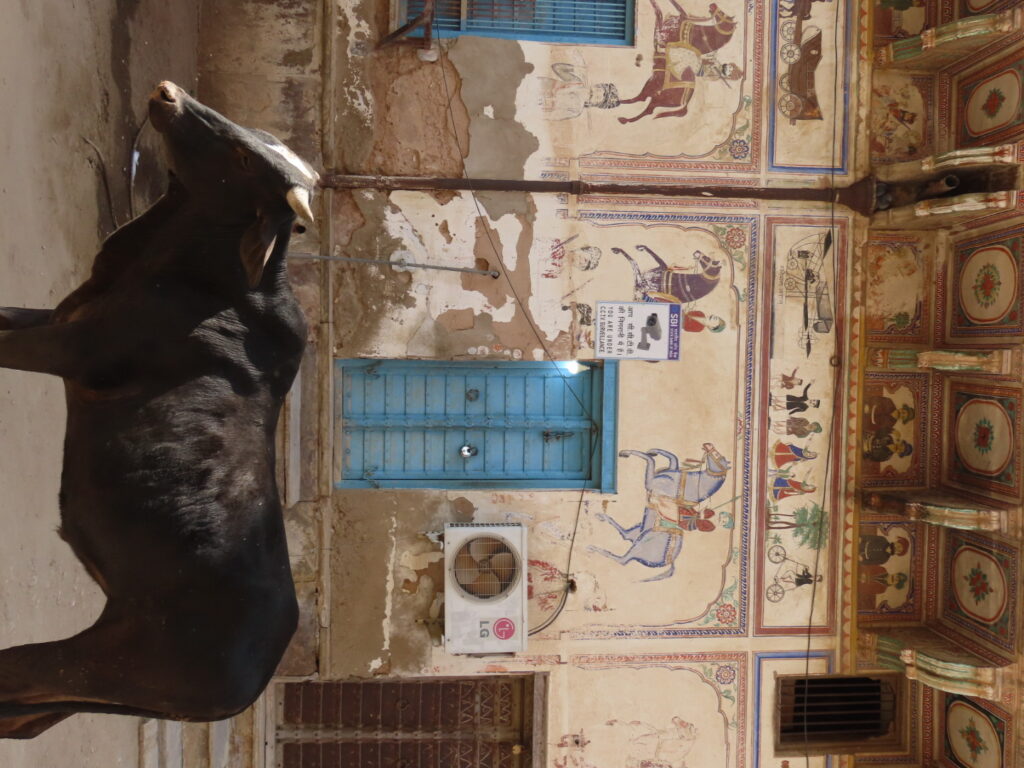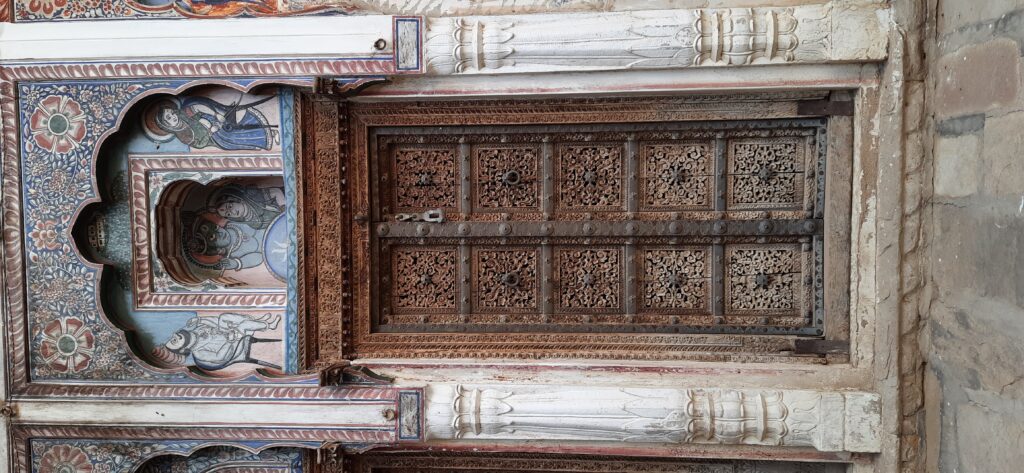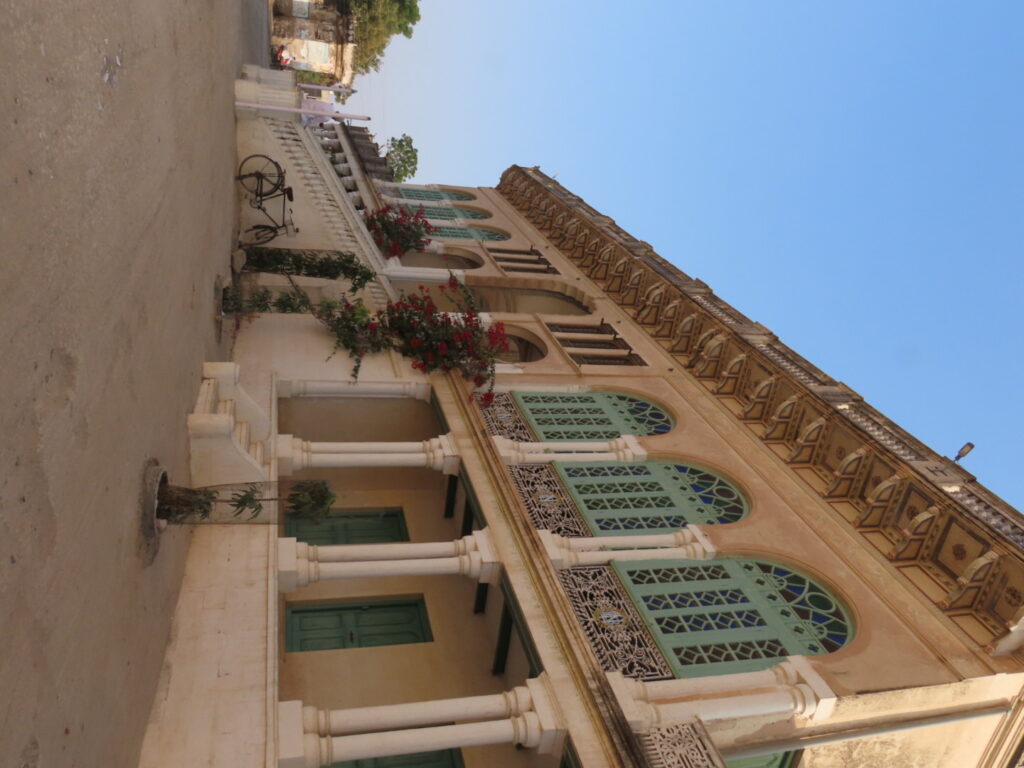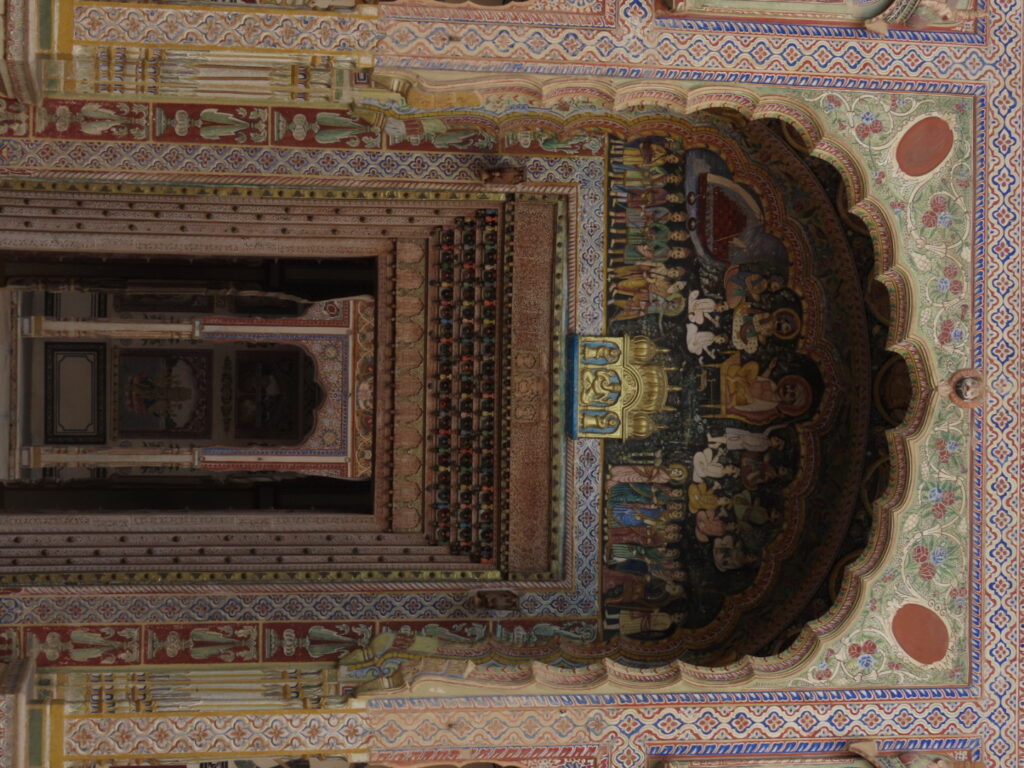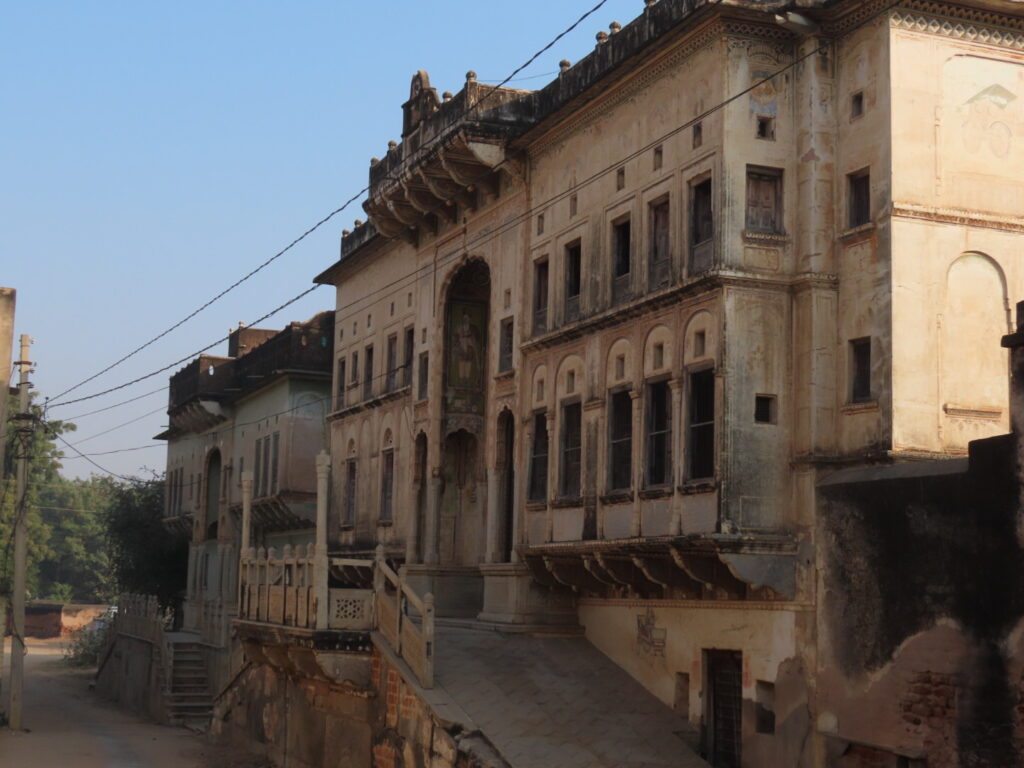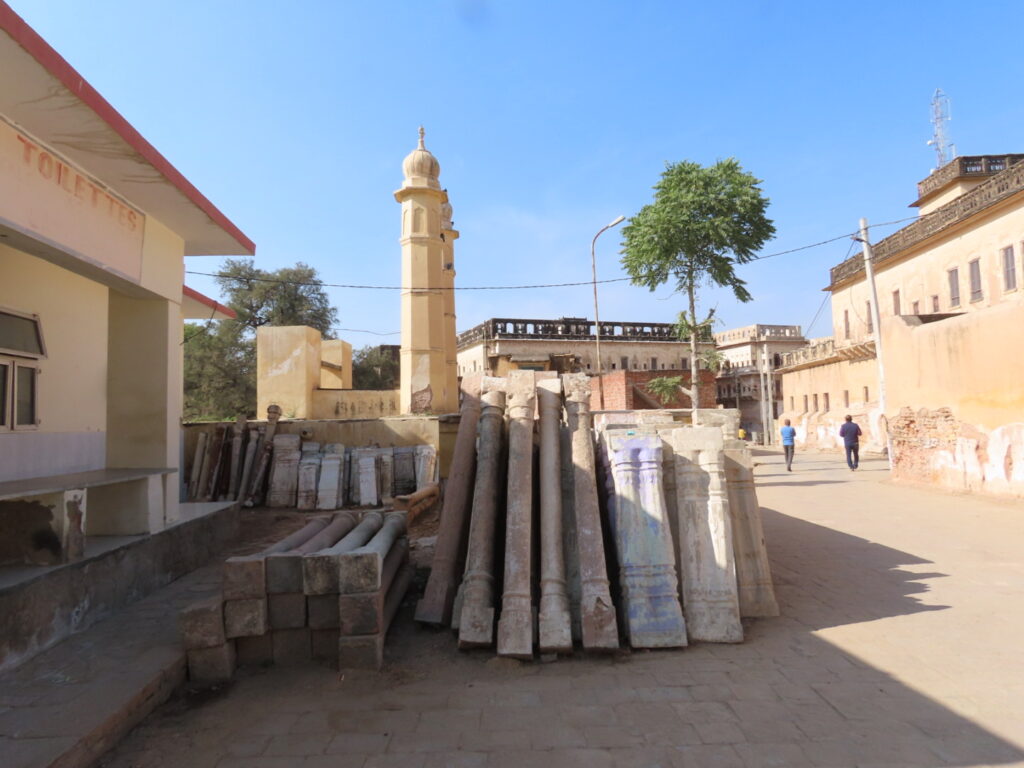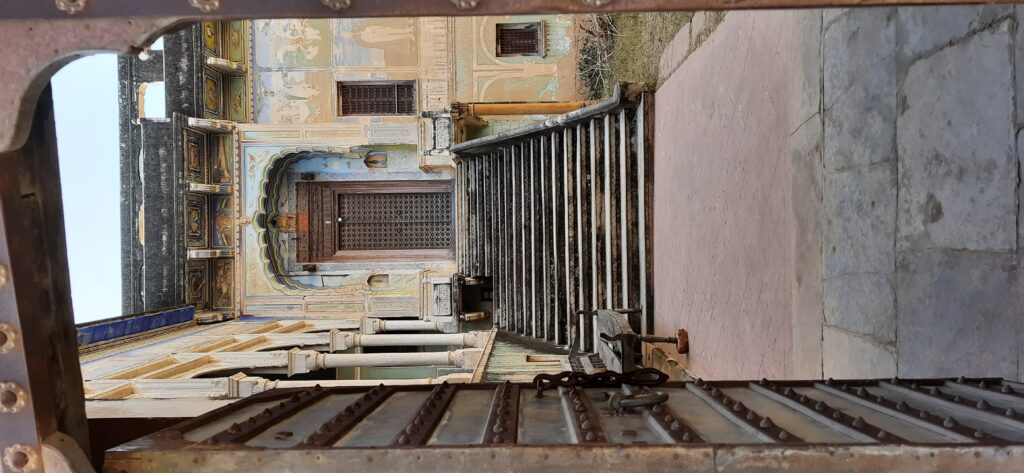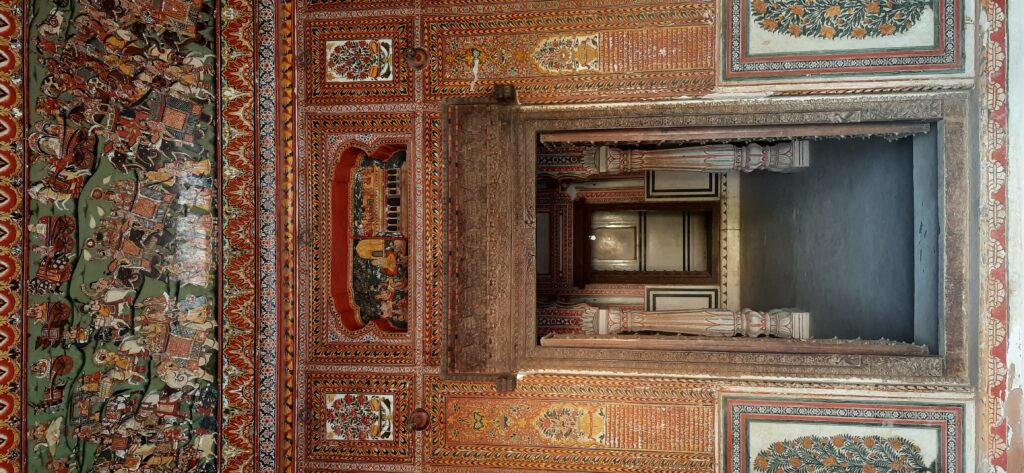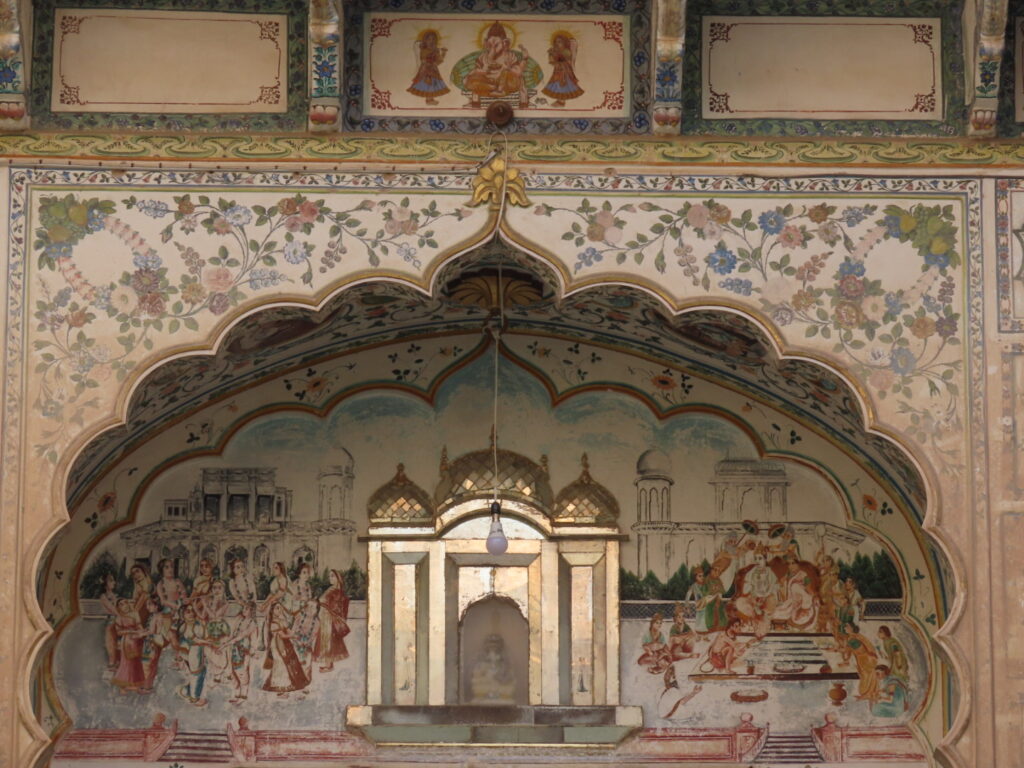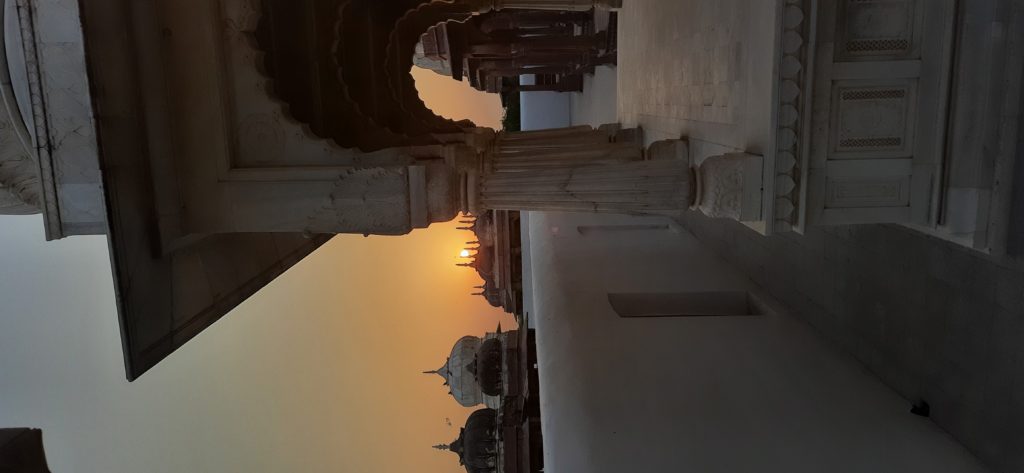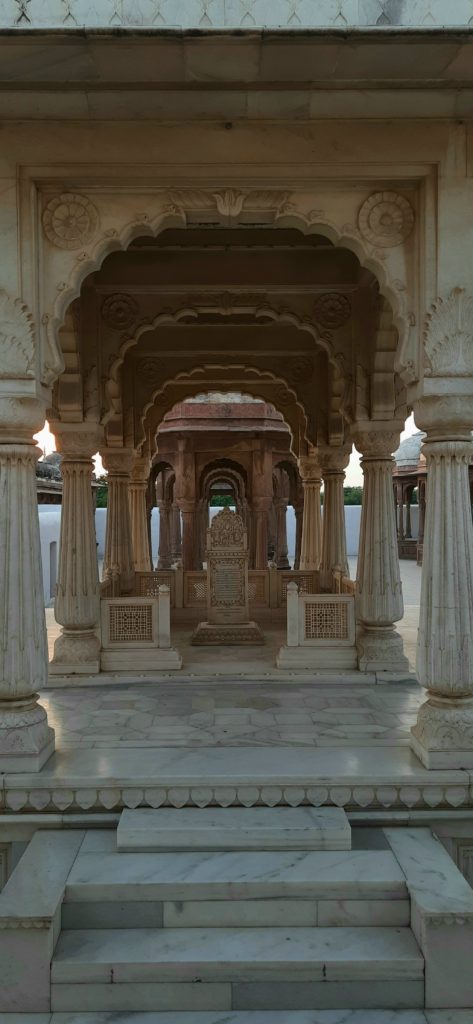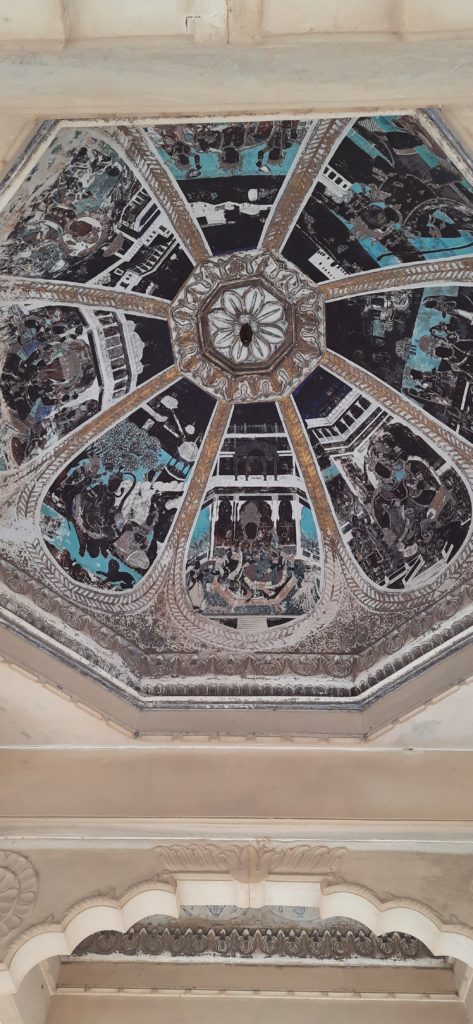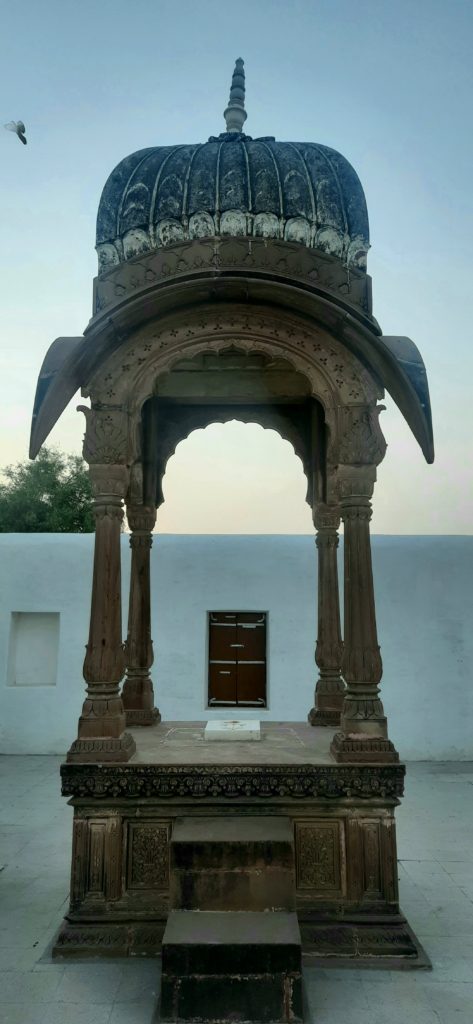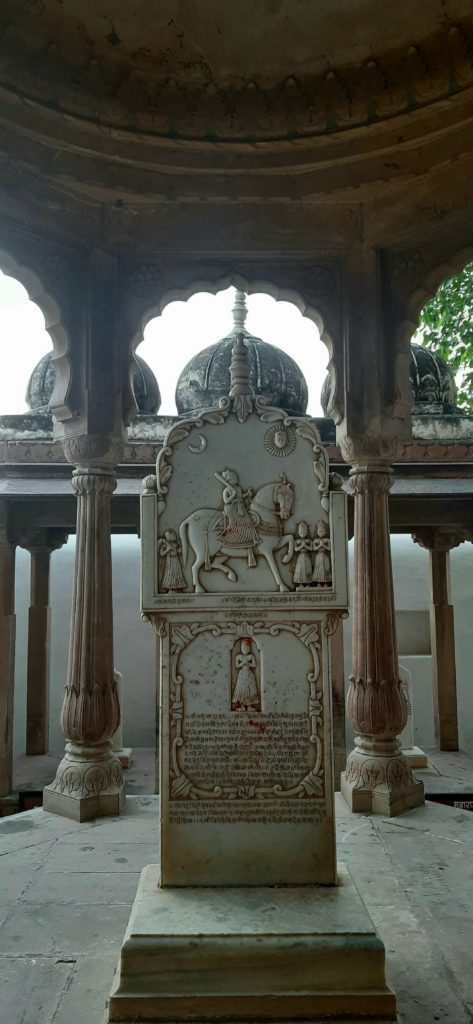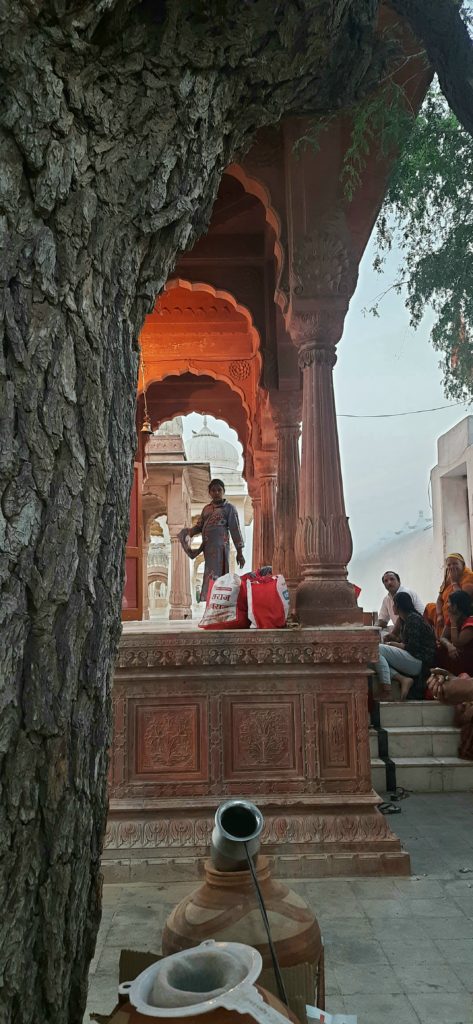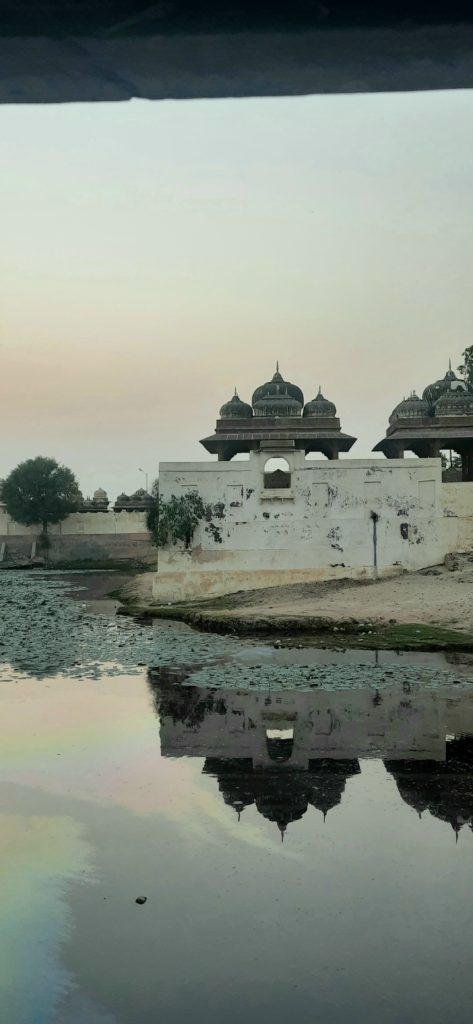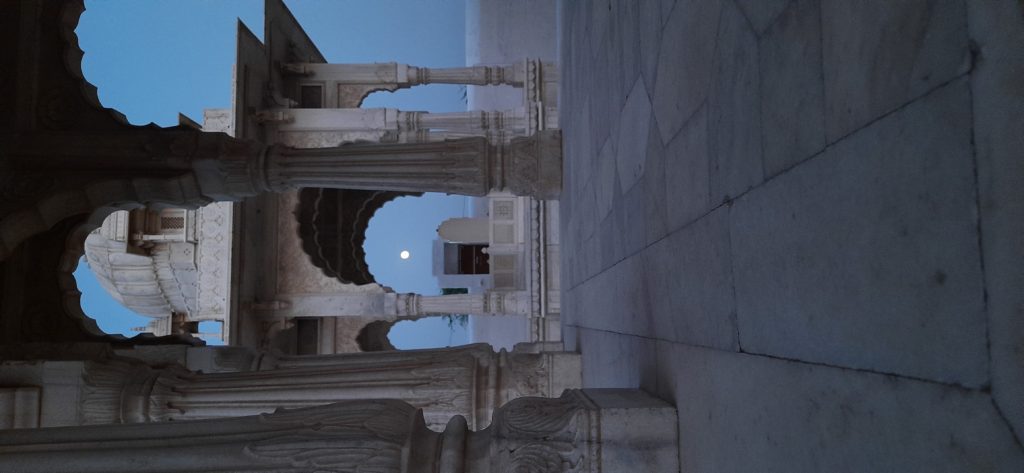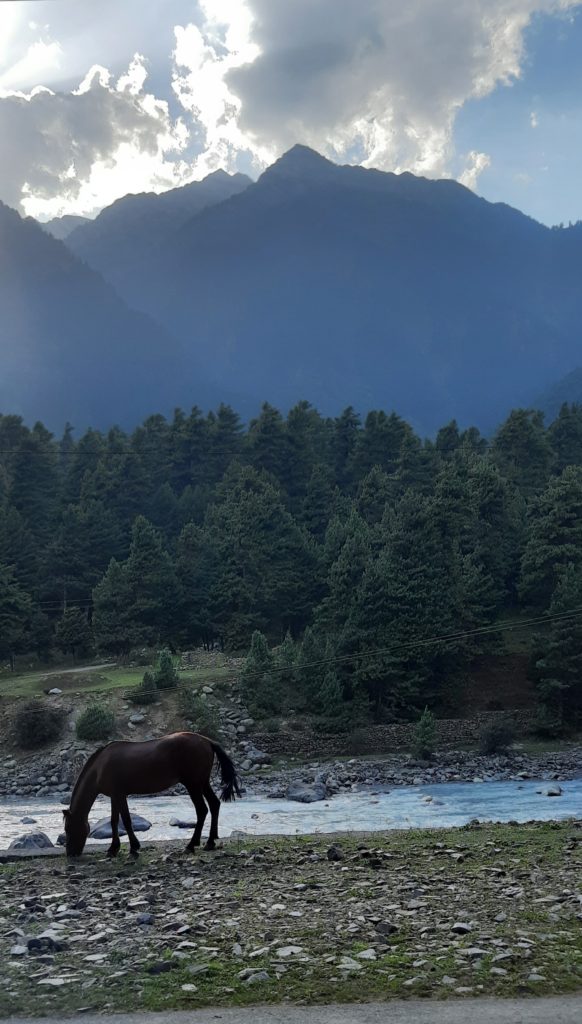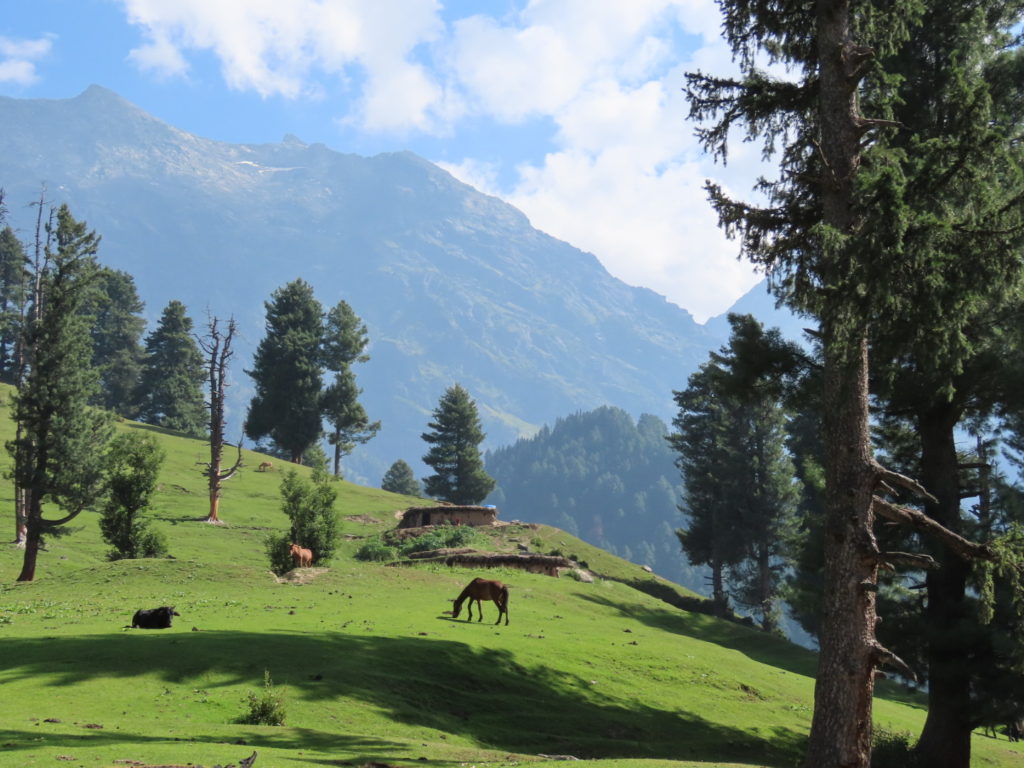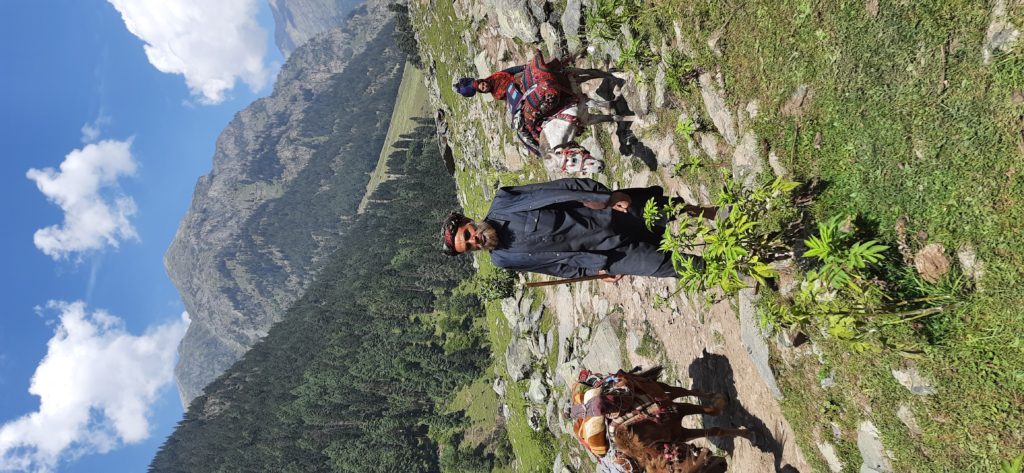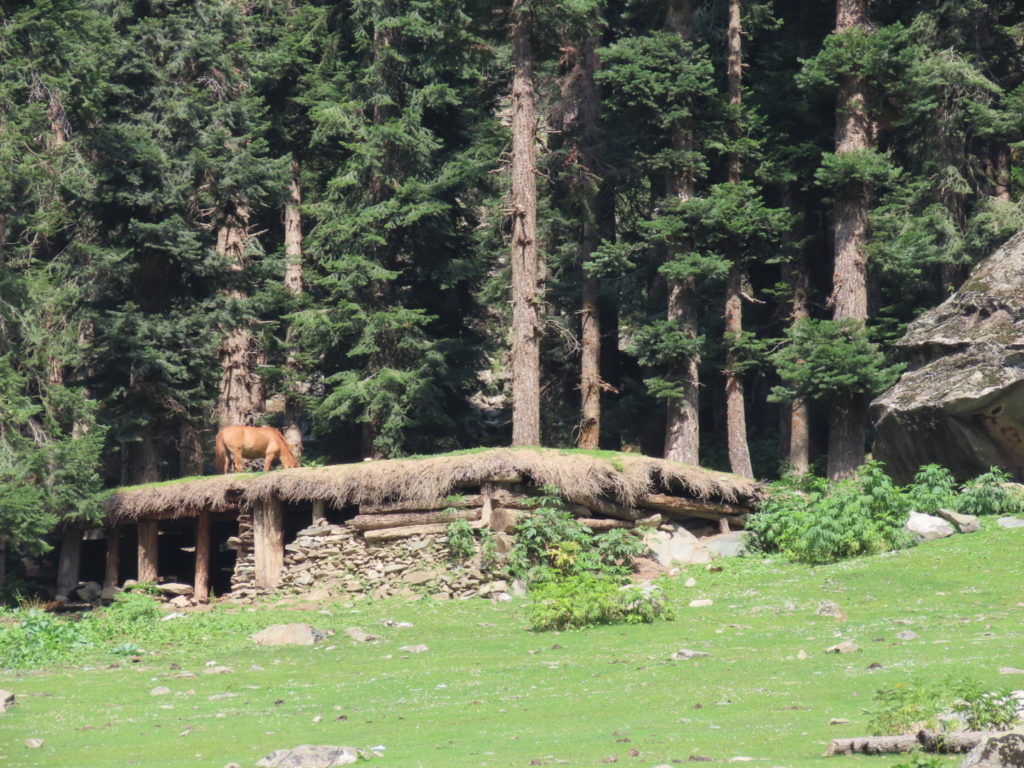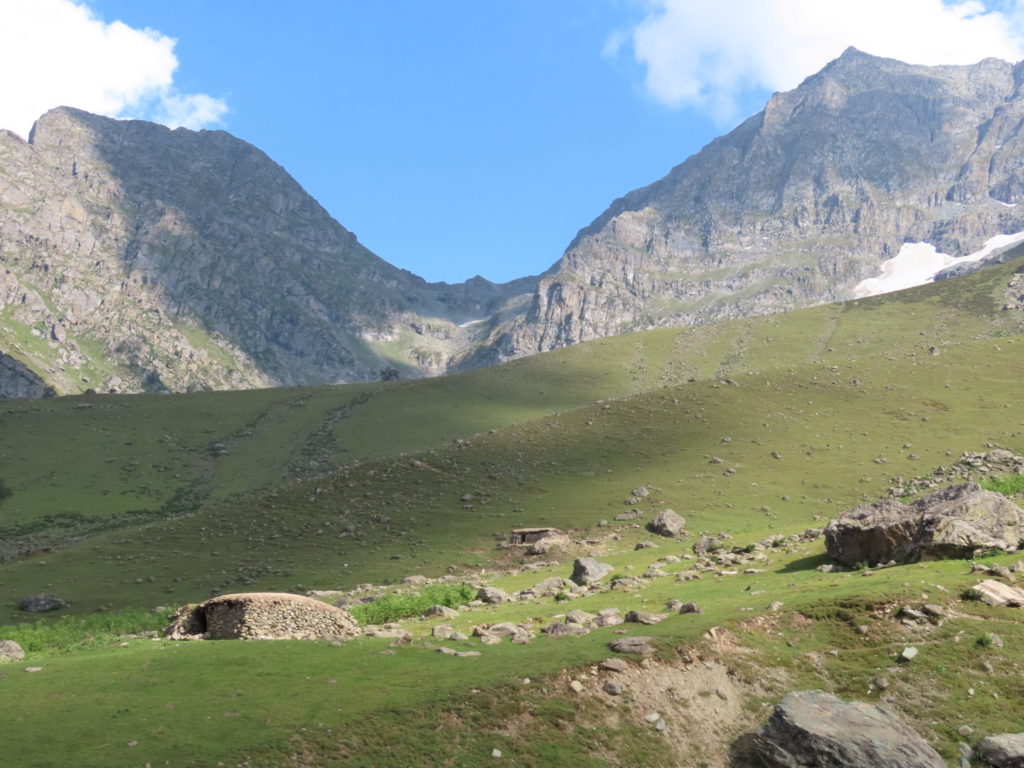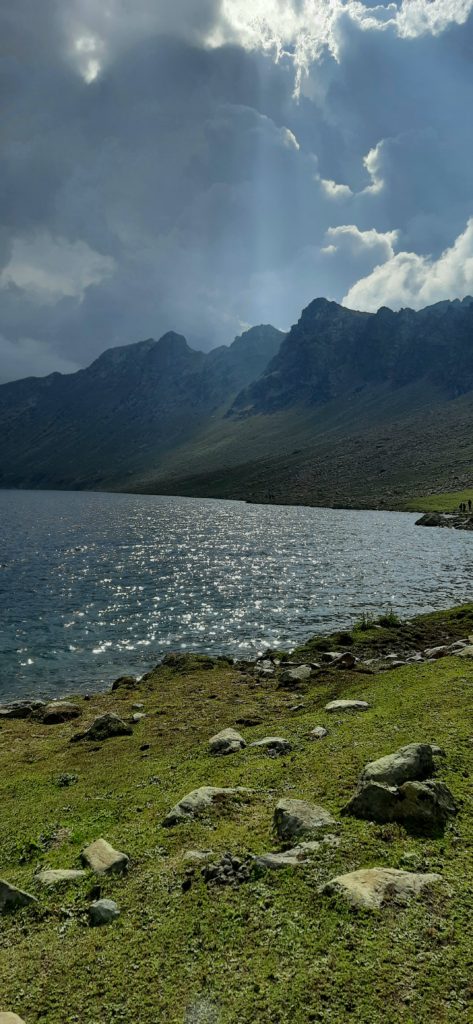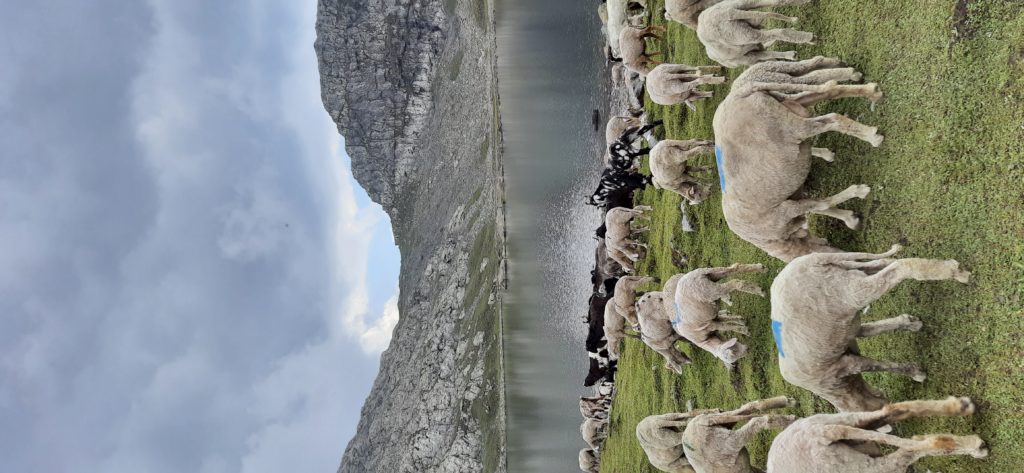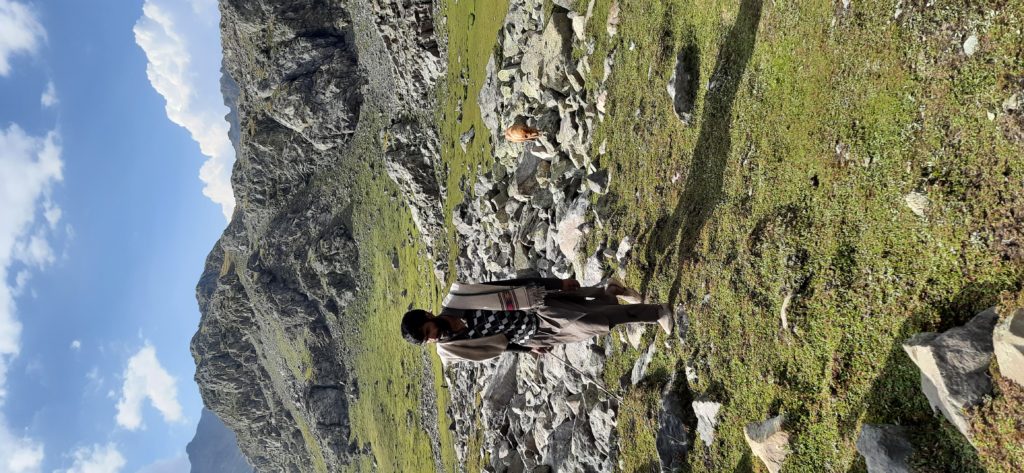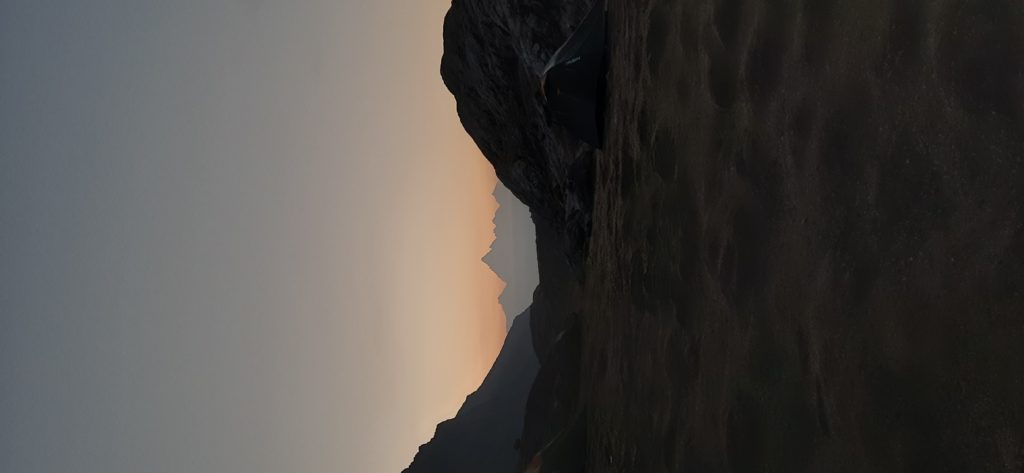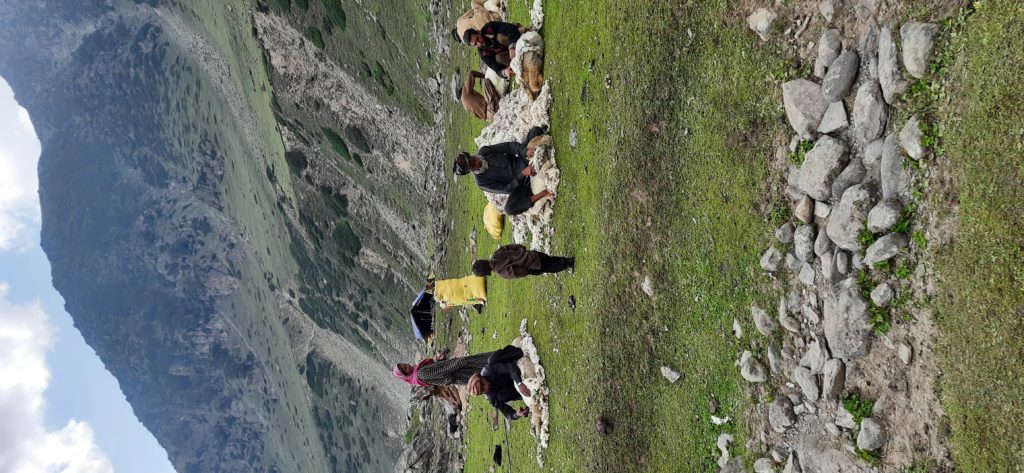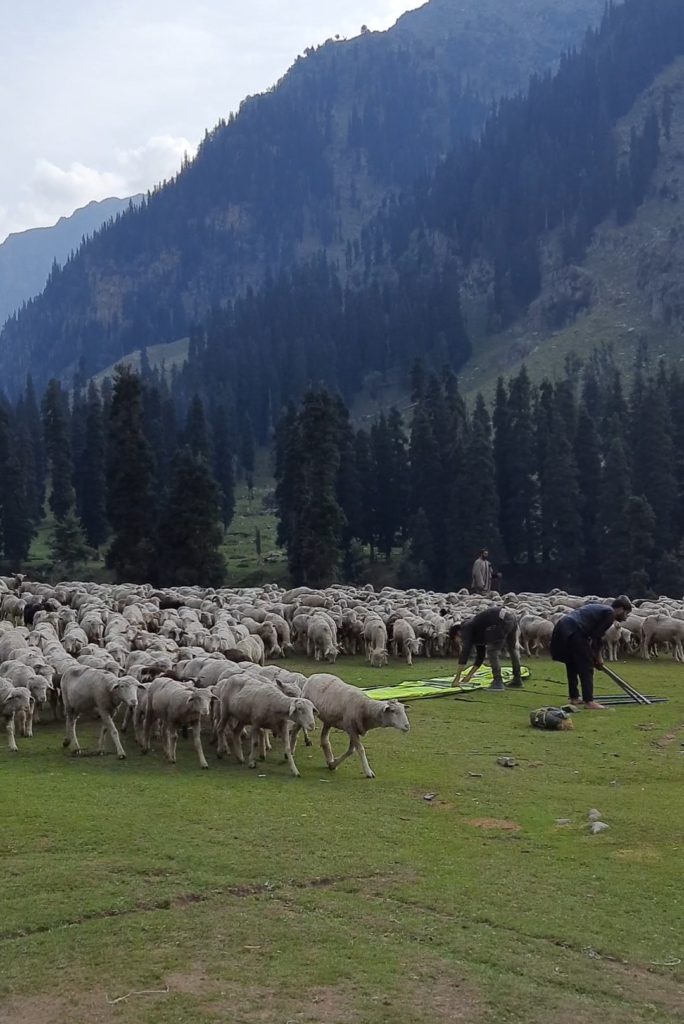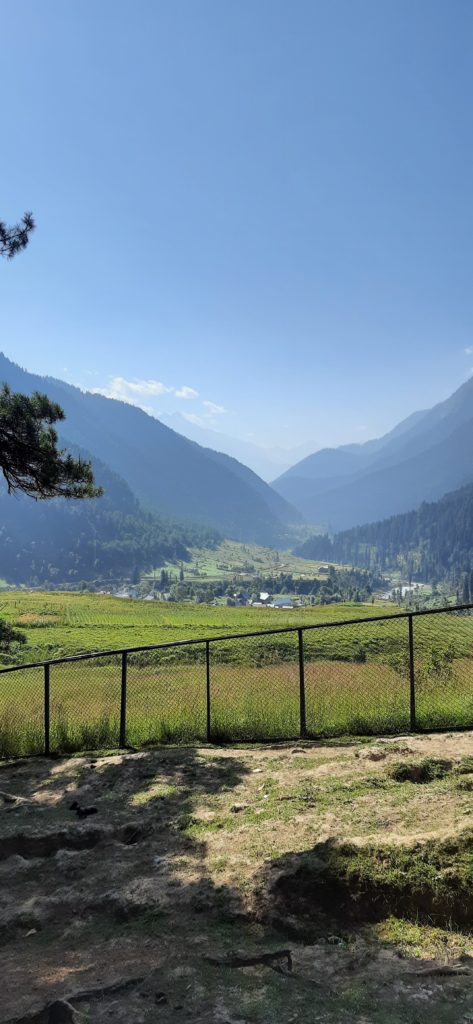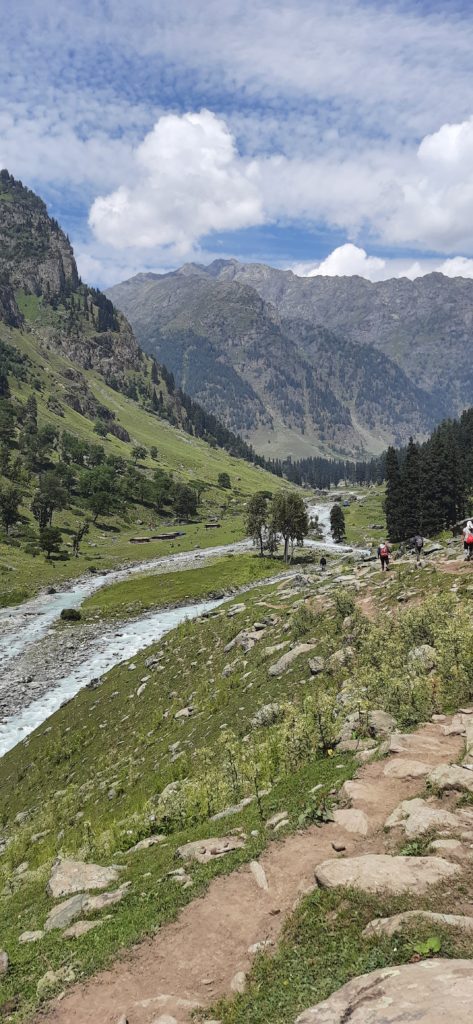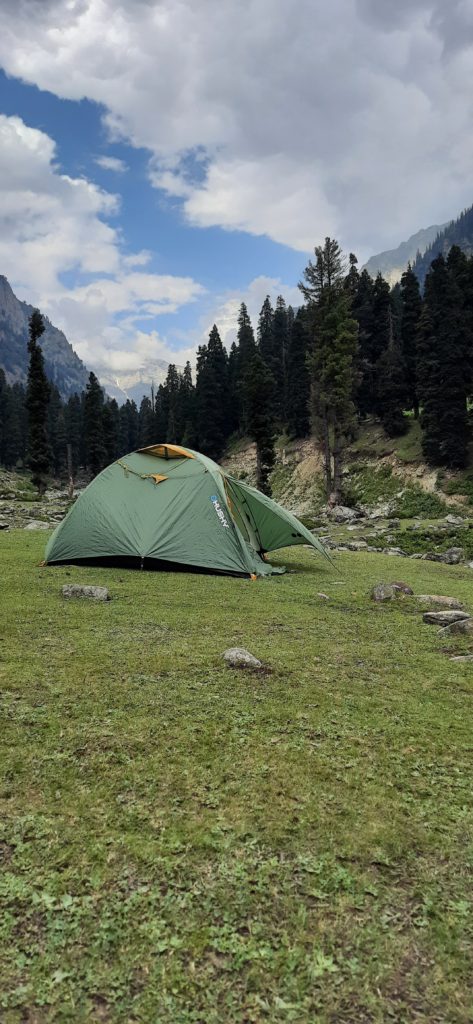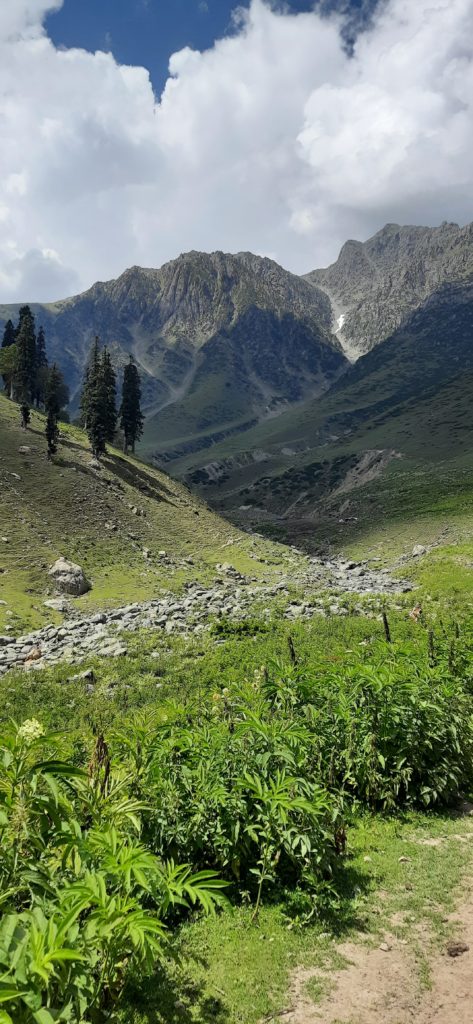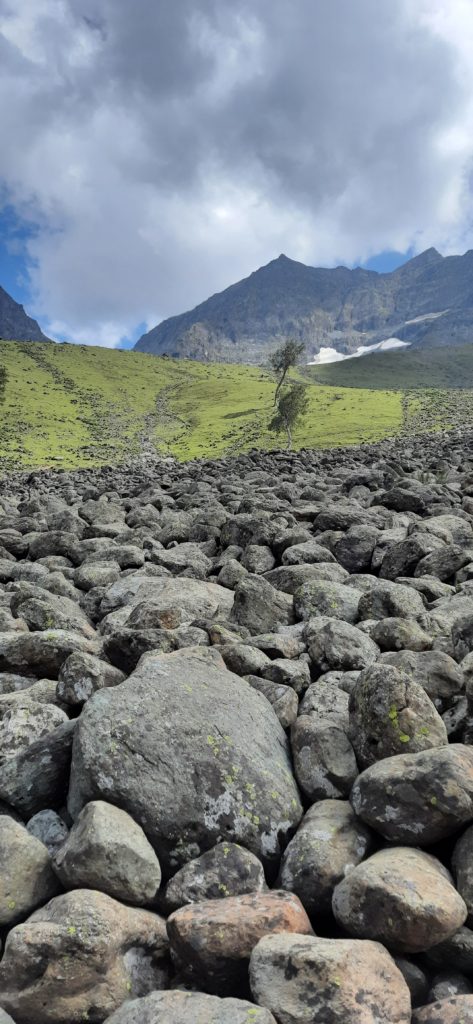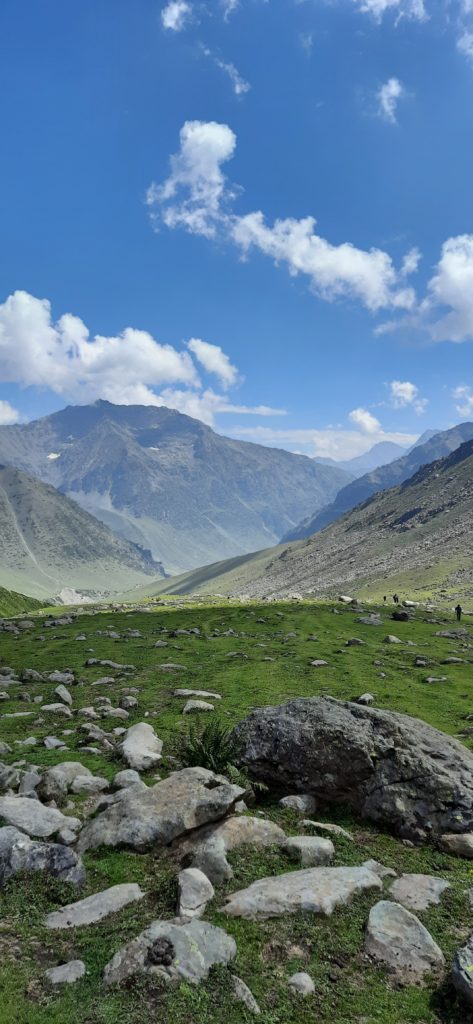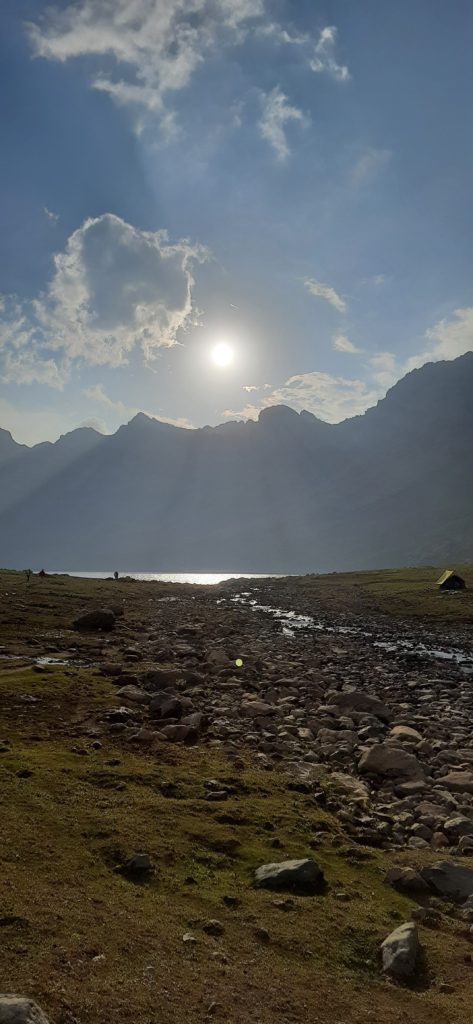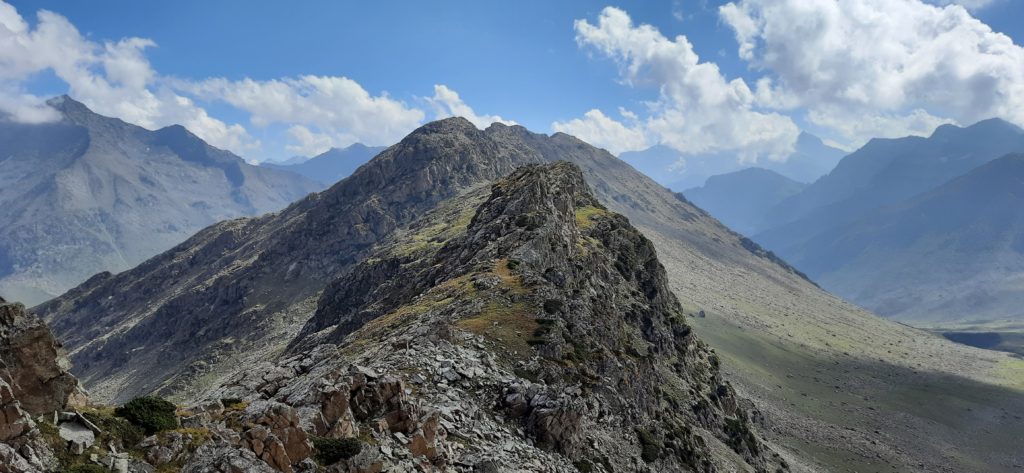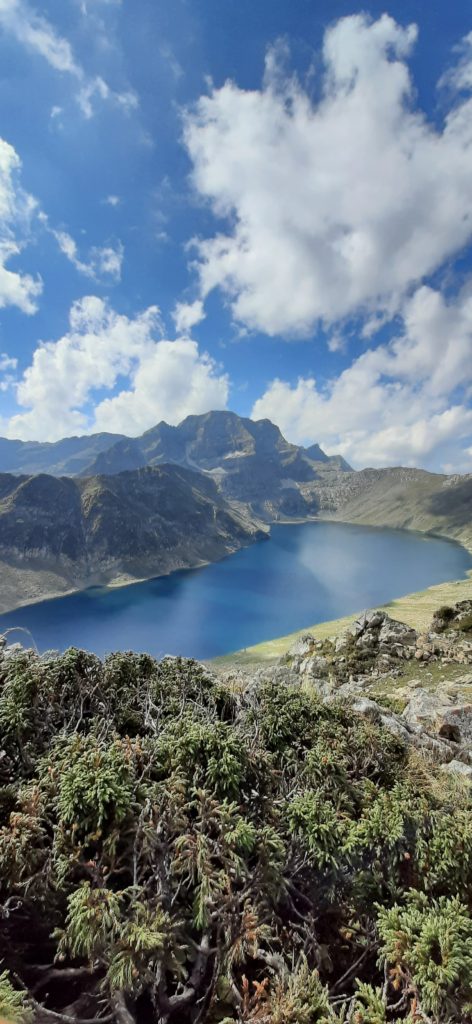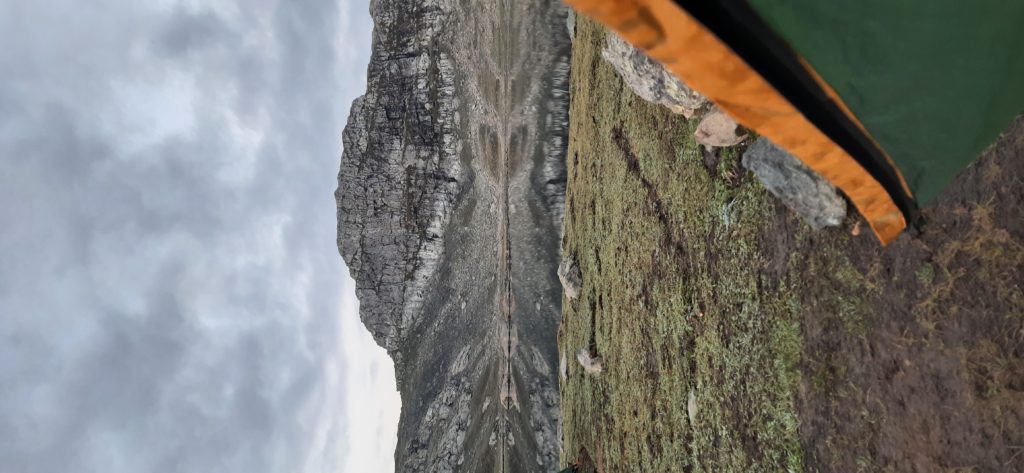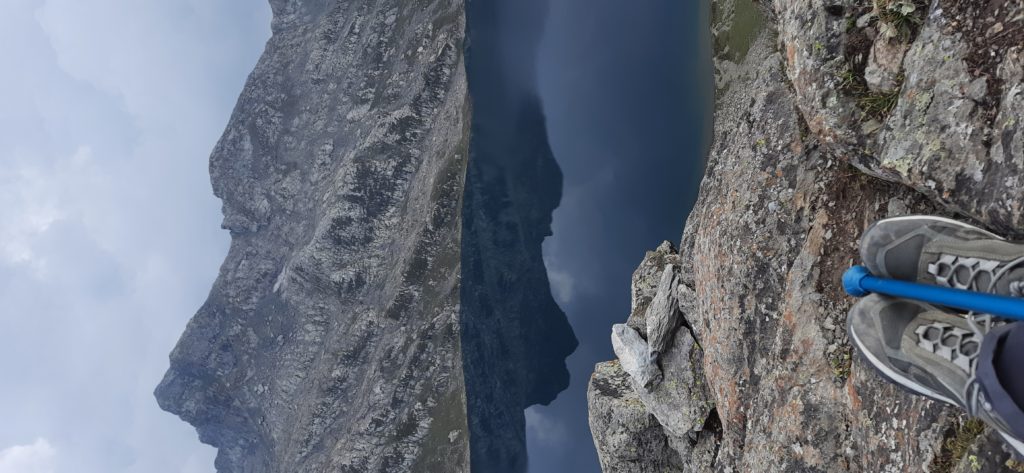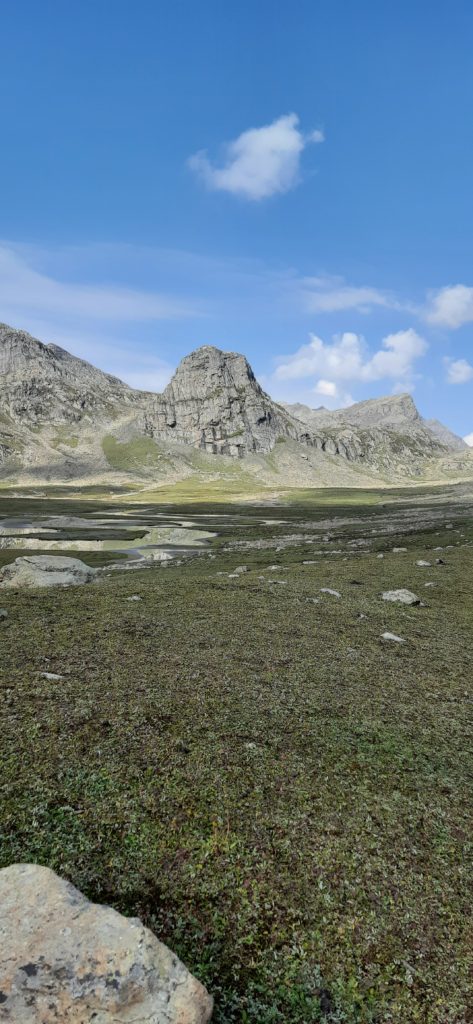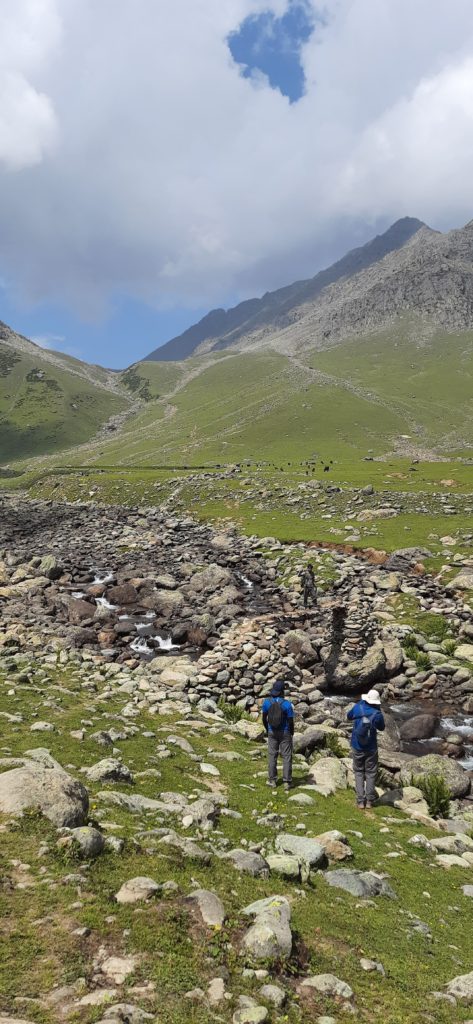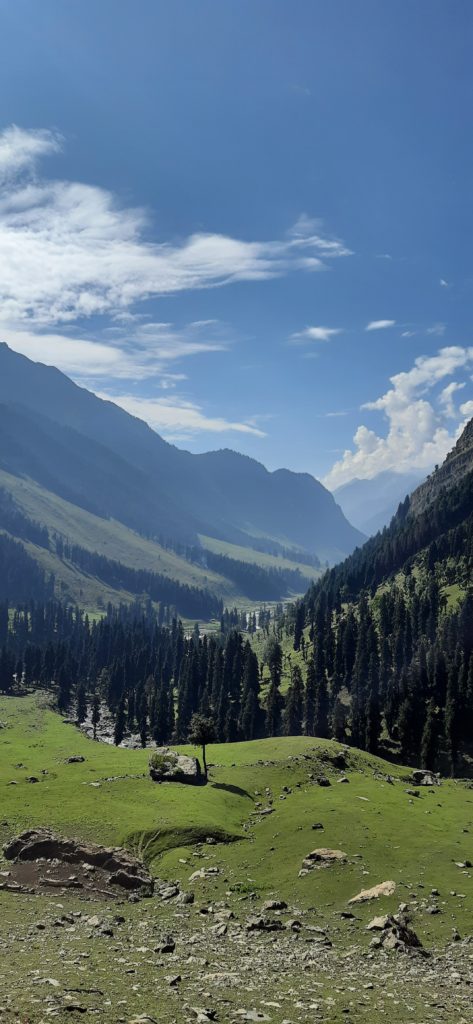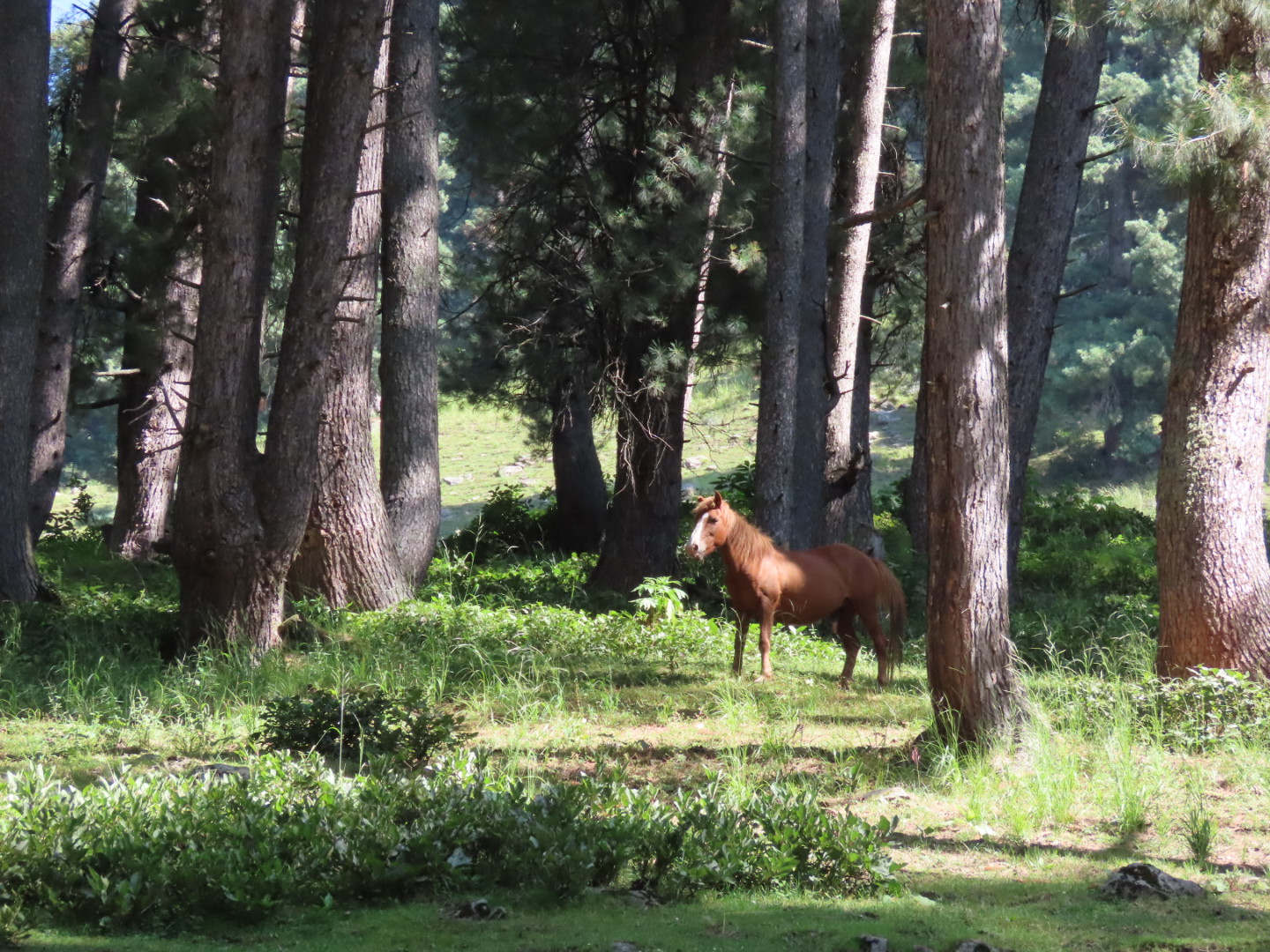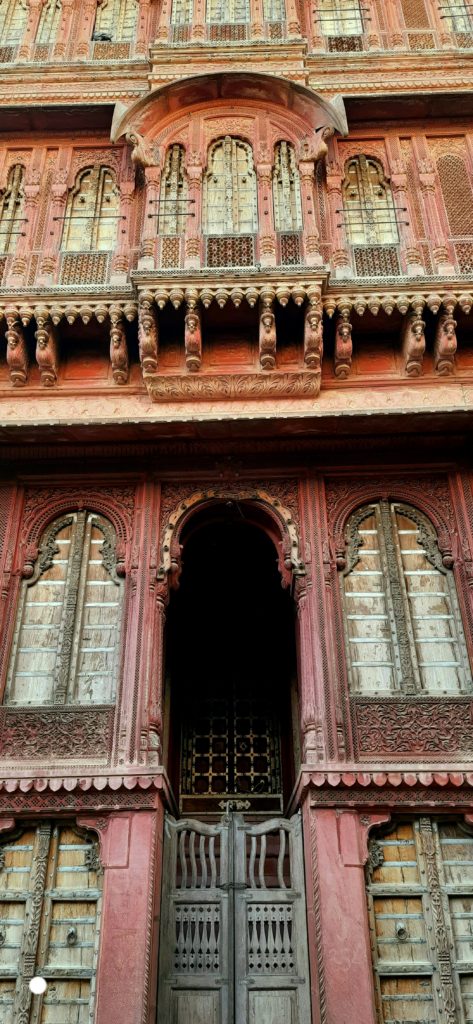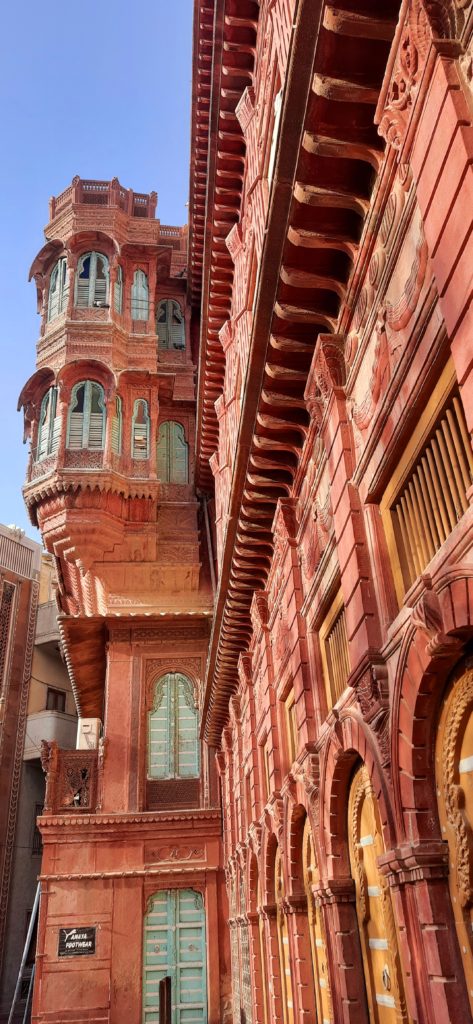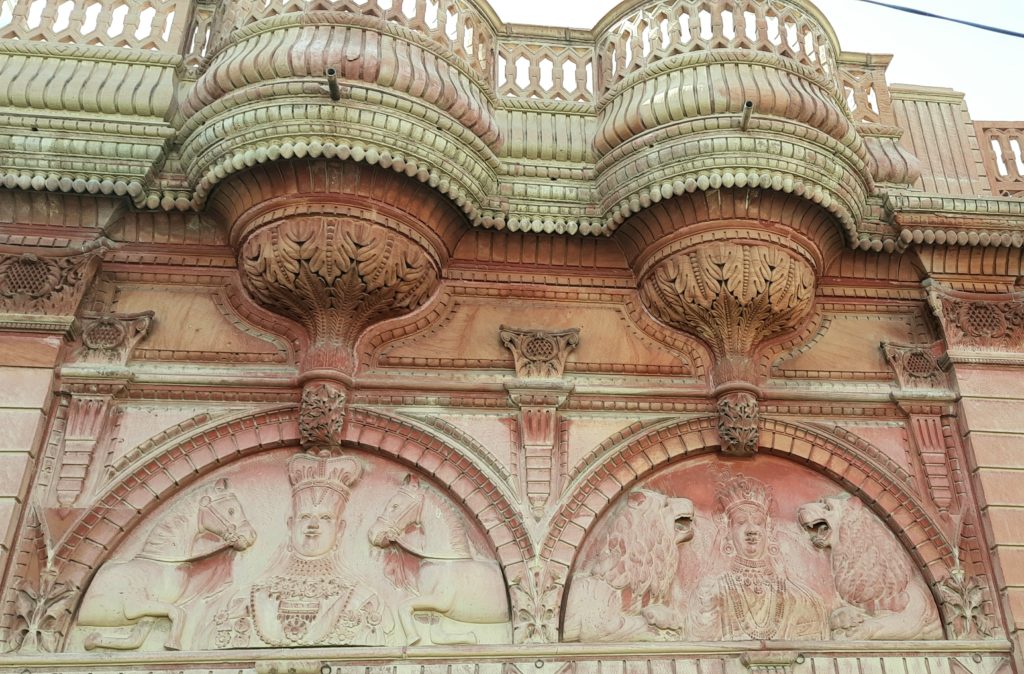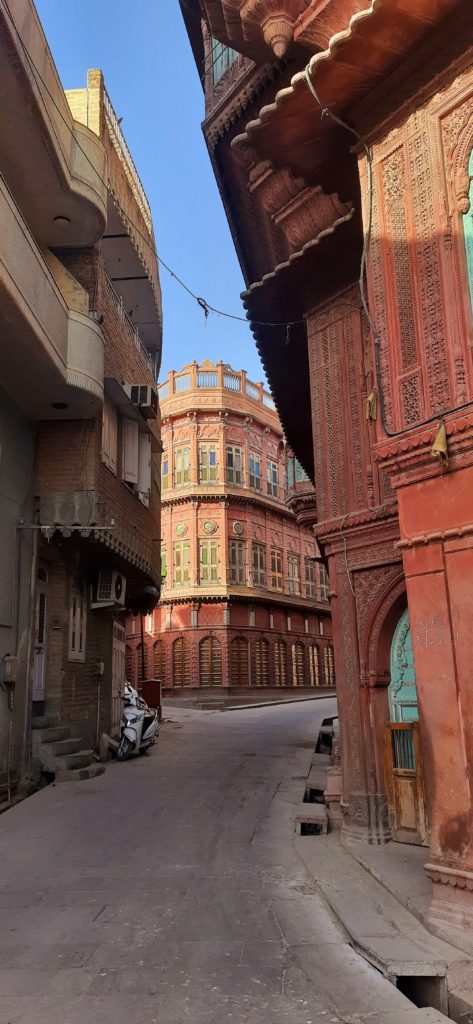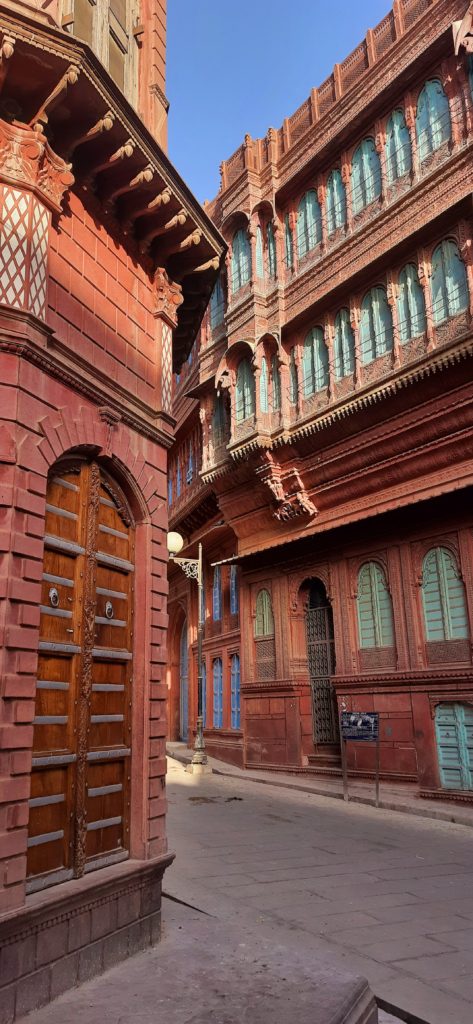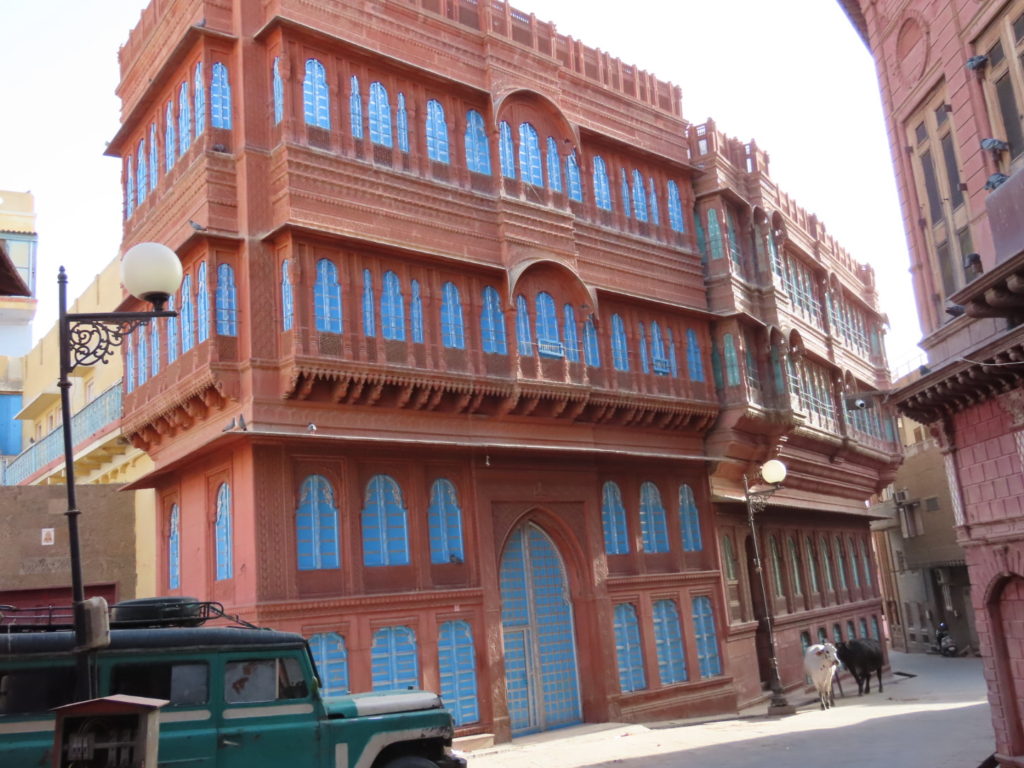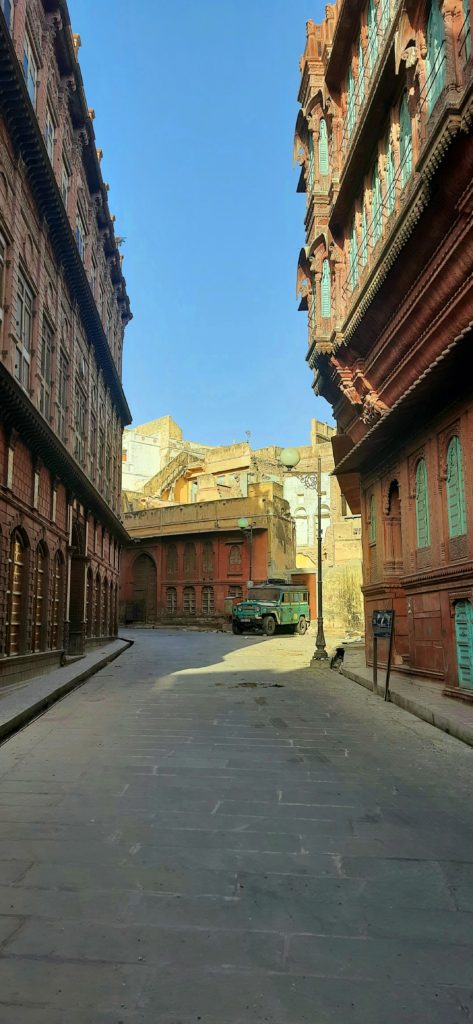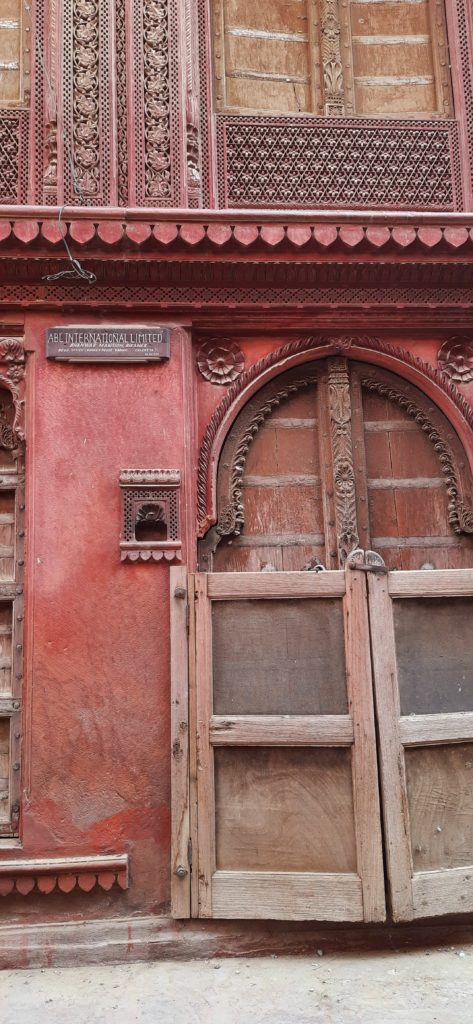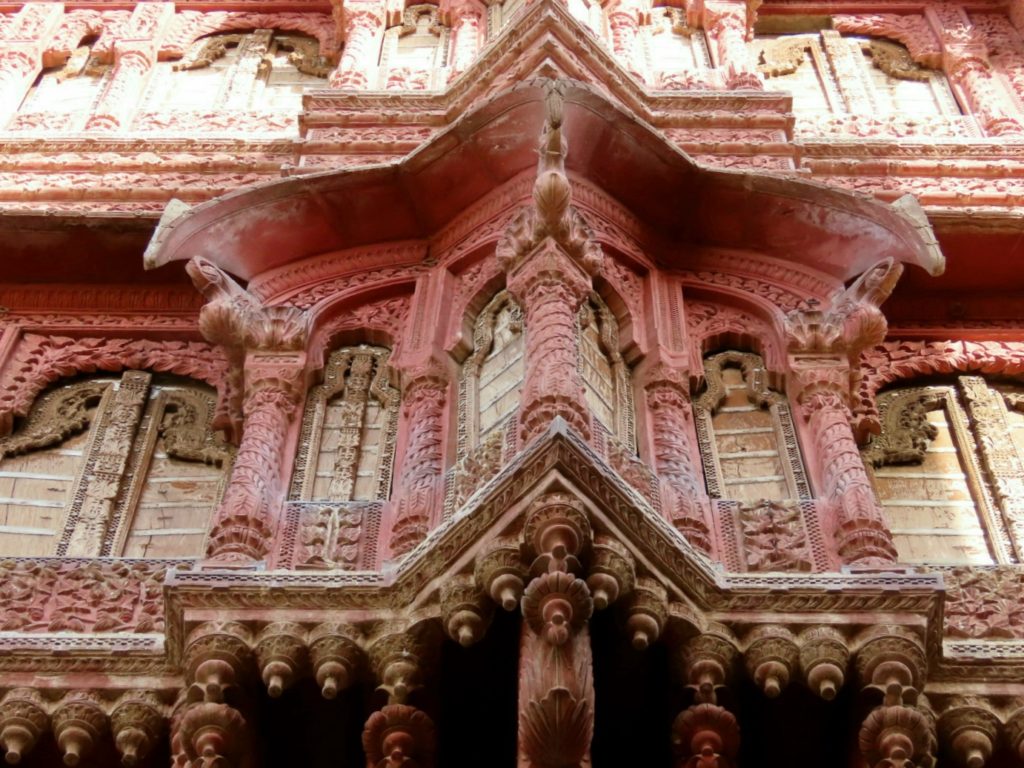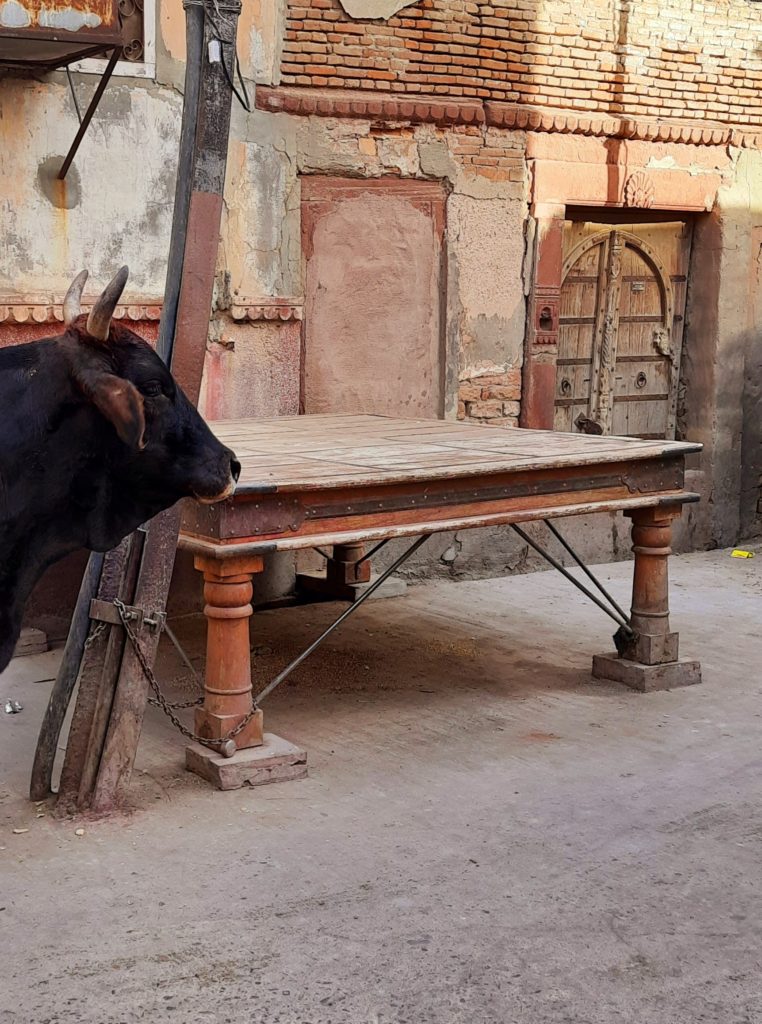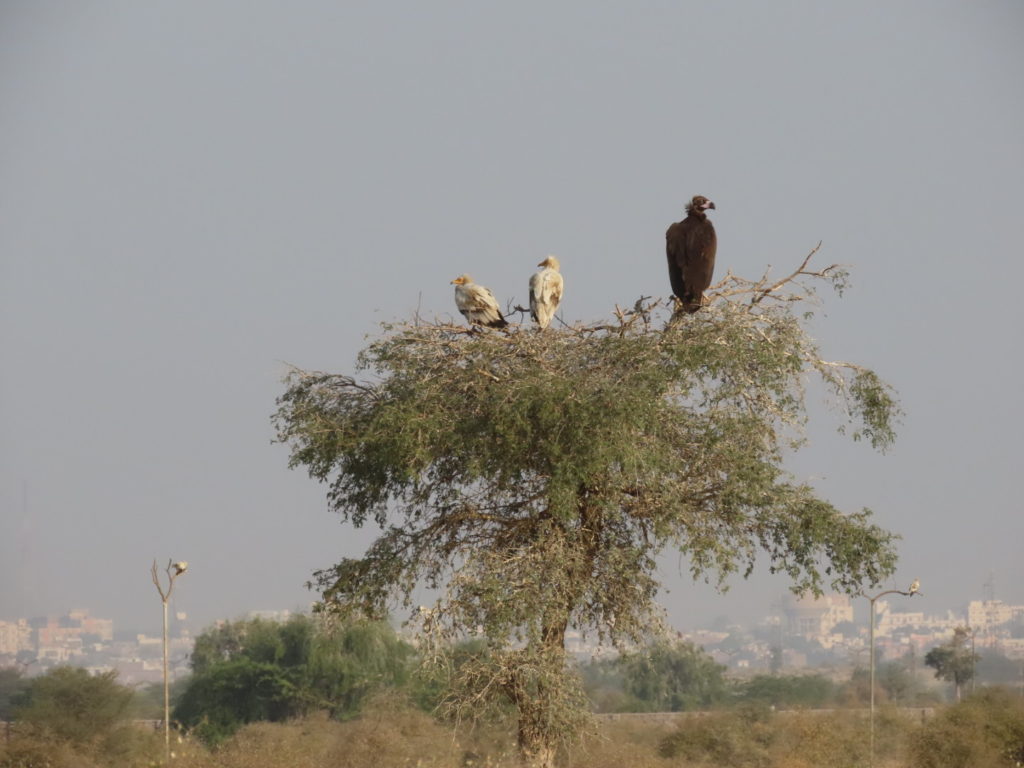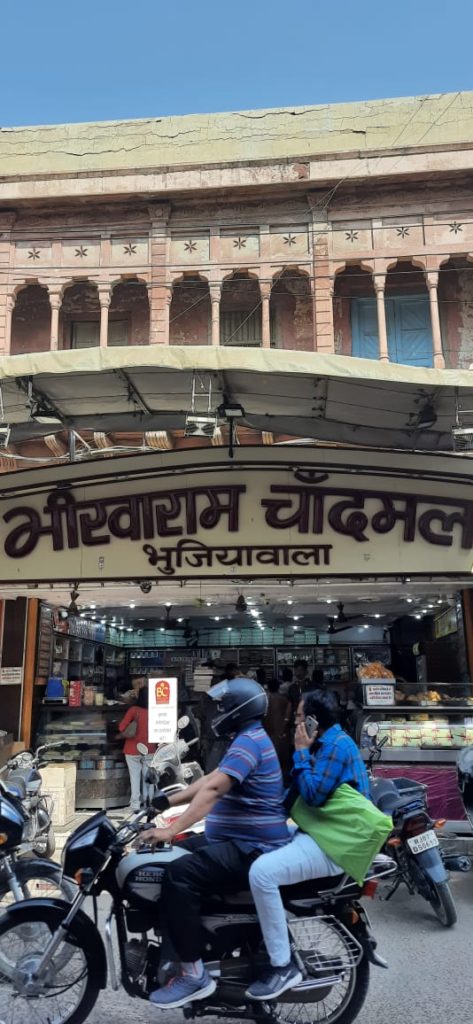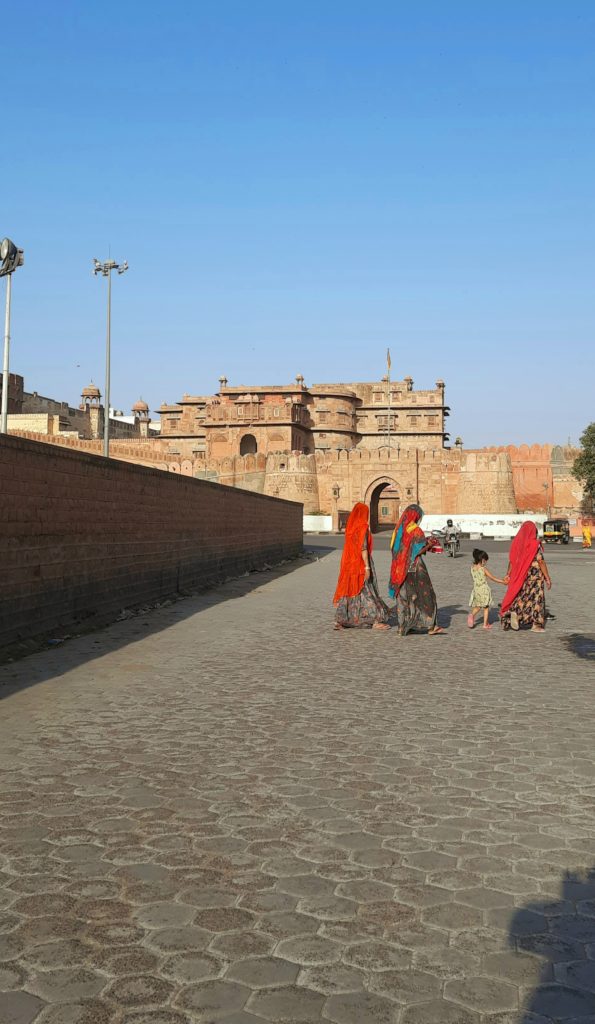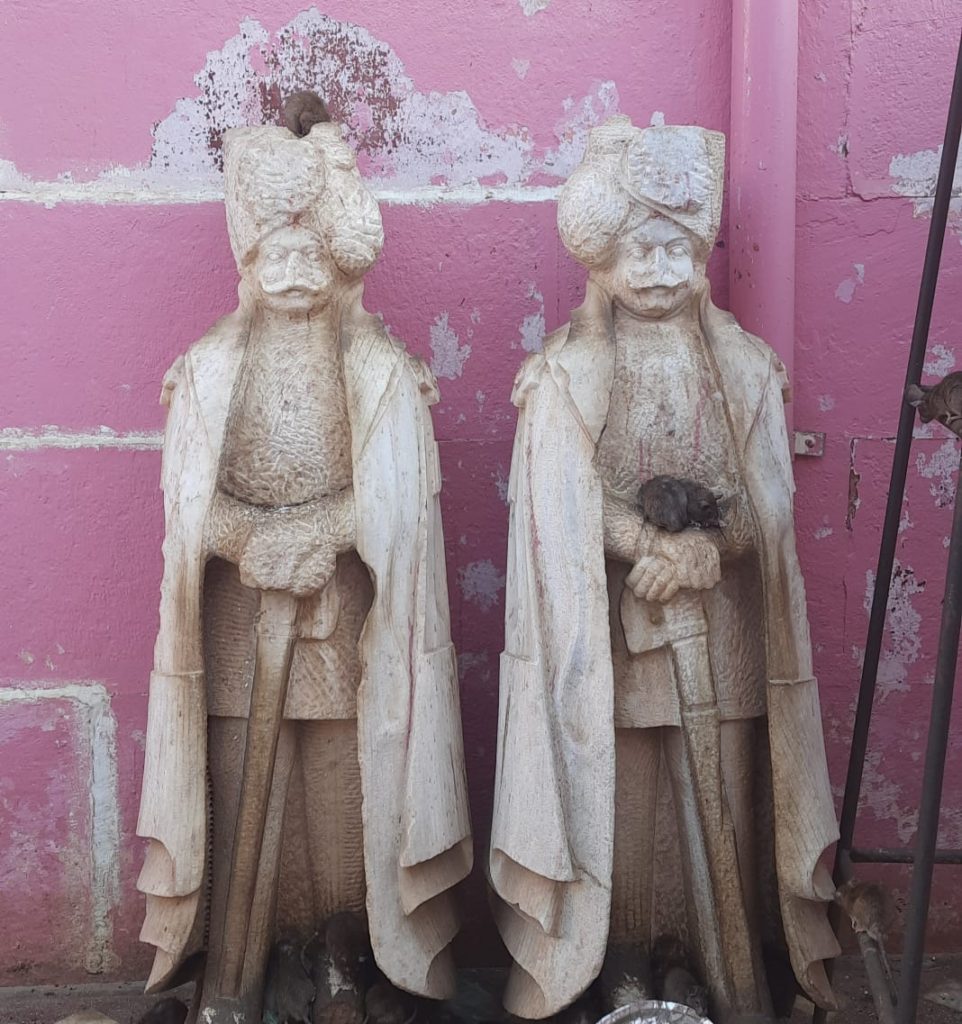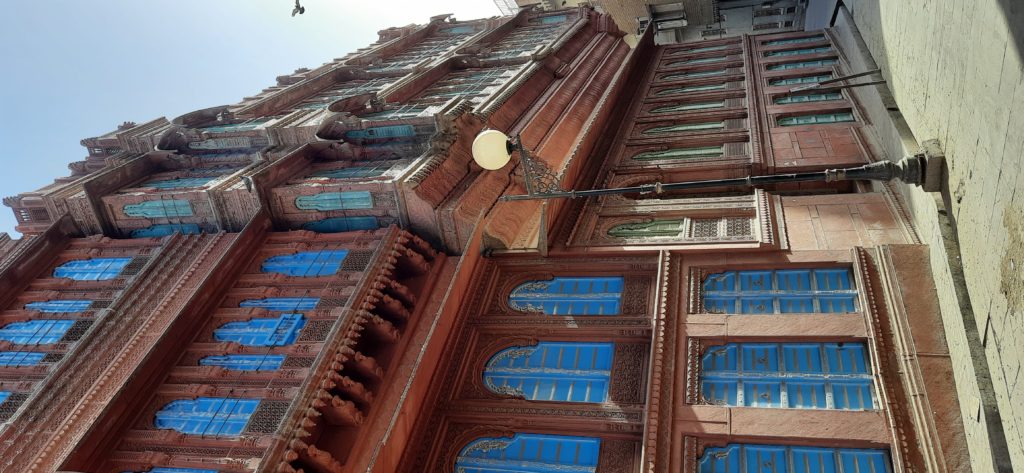The adjoining valleys of Sainj and Tirthan, named after the rivers that drain them, are part of the Great Himalayan National Park. From Larji a left will take you up the narrow Sainj valley and a right to the bigger, wider Tirthan valley lined with orchards and dotted with scattered hamlets. Our short stay at Shangarh has proved to be worth the horrendous roads. The day hikes, the meditative meandering and just breathing the deodar scented air has us craving for an encore. While the spoon-shaped Sainj valley is still devoid of masses, Tirthan started gaining traction as an ‘off beat’ location about 5 odd years back but now is firmly on the tourist circuit with homestays galore and resorts lining the river ahead of Banjar. Jibhi has trendy cafes and a hippy vibe and the narrow road to Jalori pass has more traffic than it can handle. But tucked up and away in Tirthan Valley, beyond the bustling crowd is the village of Bihar, our second destination.
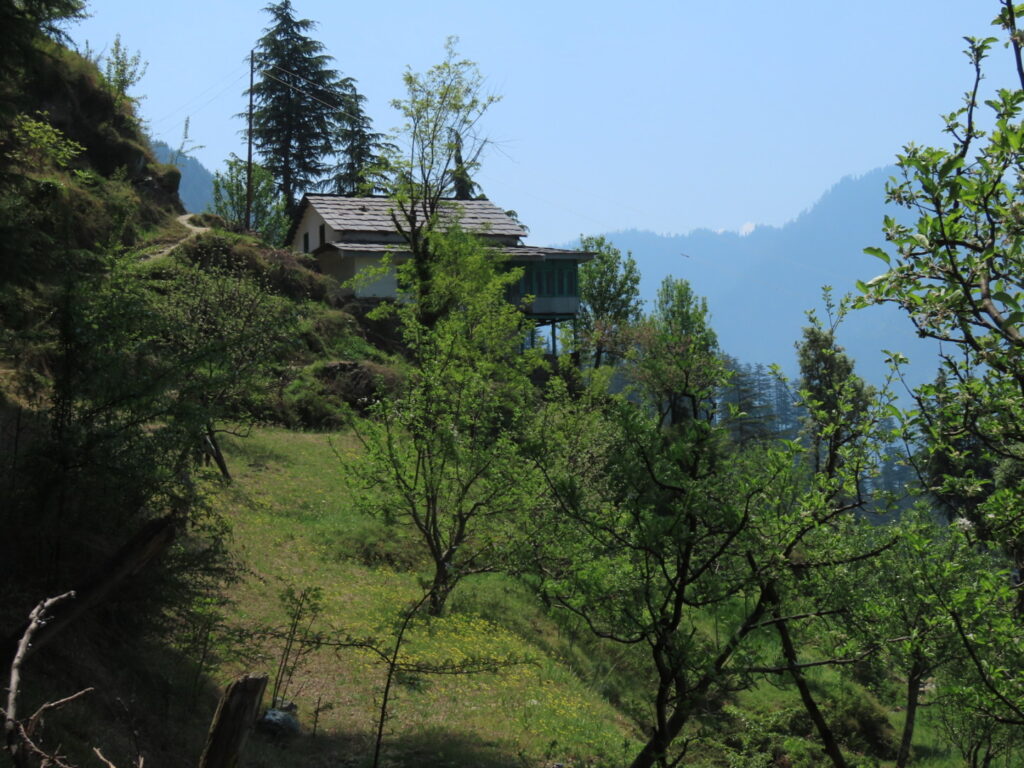
Our departure from the FRH at Shangarh is tinged with a slight sour taste when I see the caretaker dump, along with our conversations and his assurances on waste disposal, segregation etal, the garbage into a neighbouring stream. Lesson learnt. There is, in all hill stations, a burgeoning mountain of a problem of waste disposal. On that sobering note we drive off with plans to reach our homestay post lunch at Jibhi. We are spoilt for choice but our menu is on default setting… trout it has to be! The gentle drive is along the shallow Tirthan River. Hema, our host has an amused tone when she calls to ask about our whereabouts. (we are a couple of hours late) Maybe she has visions of having to organize another rescue!(She has had her share of barmy guests!)
Another road to discover passes- At the Darwaza of a Road Less Travelled
Beyond the Bustle at Bihar
From Jibhi we backtrack towards Banjar and then climb up on a deserted road winding through a forest, cross the entrance to the Shringa Rishi temple till we reach the end of the road. Janisha, a slight girl with an angelic face and solemn eyes has tagged along with Hema, her equally petite mom to help carry our luggage (I think she has heard of the furry guest) up the last 100 meters or so to their home- Tirthan Eagle Nest.
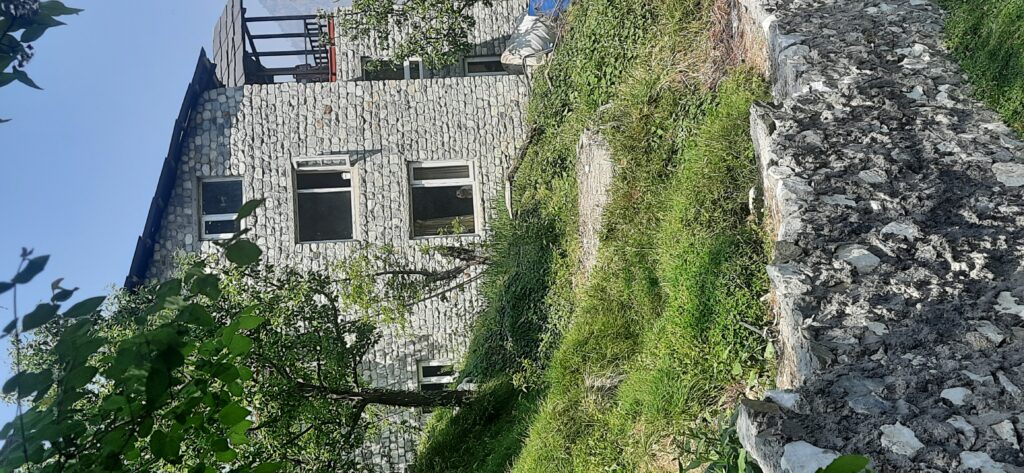
Hema and I have been connecting over the phone and here we are finally, after many false starts. Perched on the edge of the village, close to the wired trolley going right up to Myaji point, the stone and wood house is set into the slope. It is a home made with much thought and from our room window I can reach out and touch the grass! After tea we head up the path to the tiny village, past wooden sheds stacked with hay on top and with a place for the cattle below.
A homestay seeped in culture is- Dera Jaipur: A Homestay for Stellar Style and Exceptional Experiences
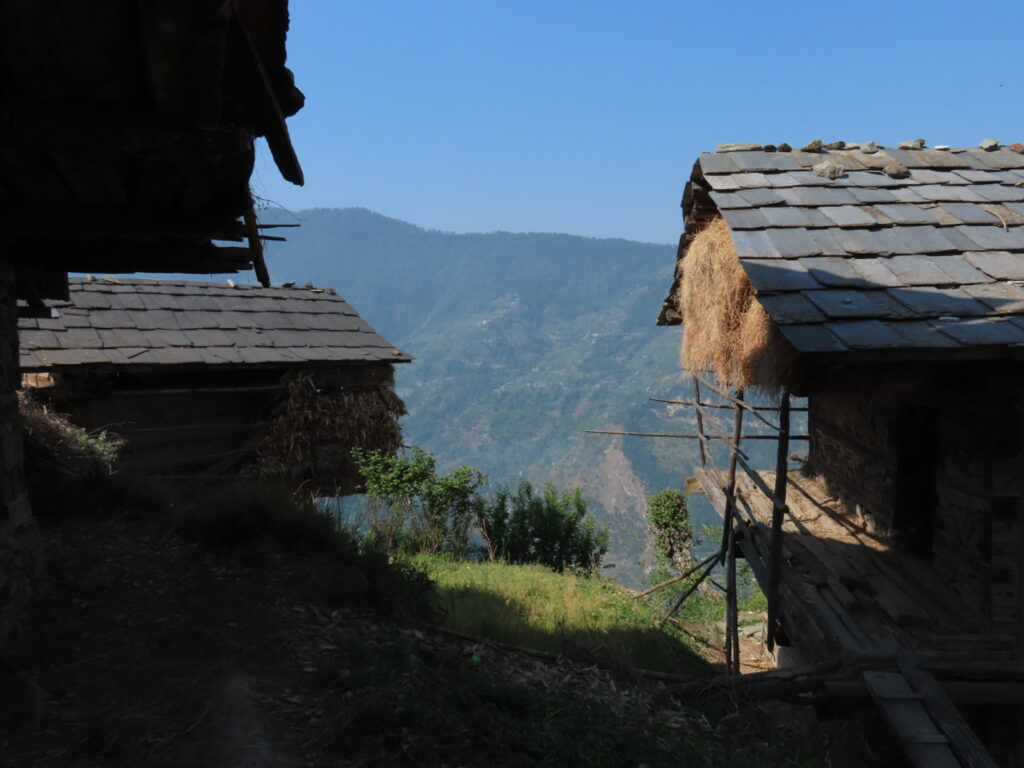
The houses are huddled around a clean paved square, their wooden balconies at an arm’s length from each other. Two old women gossiping on one of these stop briefly to give us a cursory look, children run around in the square and up ahead young women go about their chores around a communal tap. Young girls, their bags laden with school books are heading back to their homes somewhere on the mountainside. They point the way to Chehni Kothi. We can see the tower in the fading light. But don’t have enough daylight left to reach and be back and I’m not up to trapezing on narrow paths in the dark. Smart move!
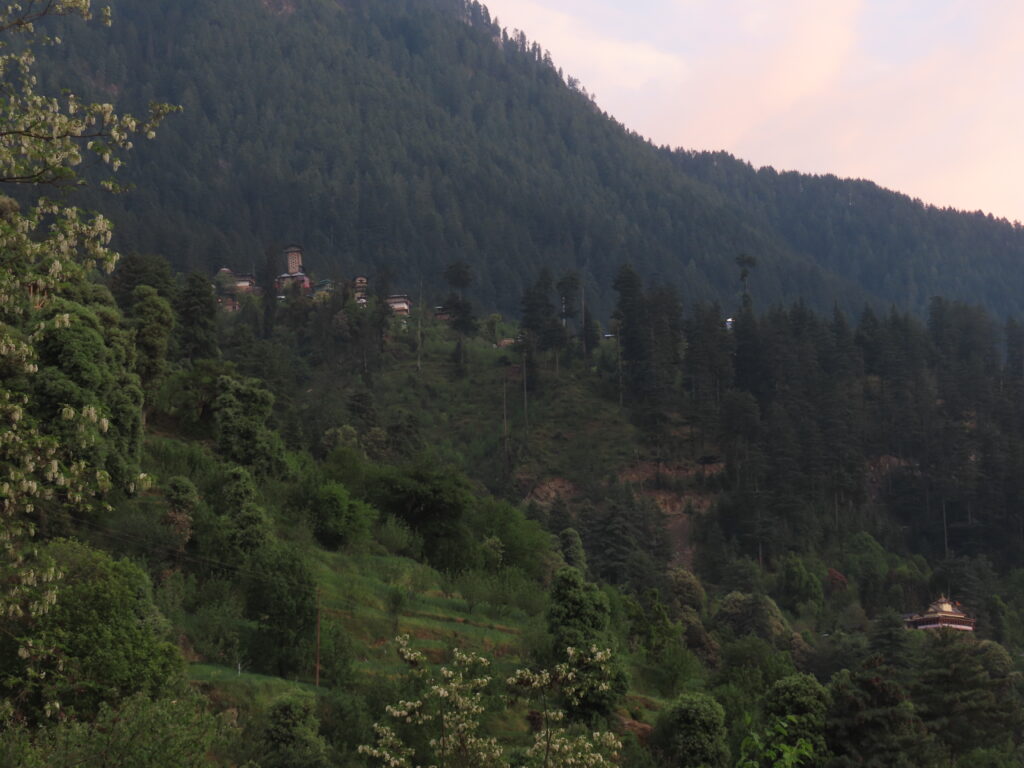
Leaning tower of Chehni Kothi
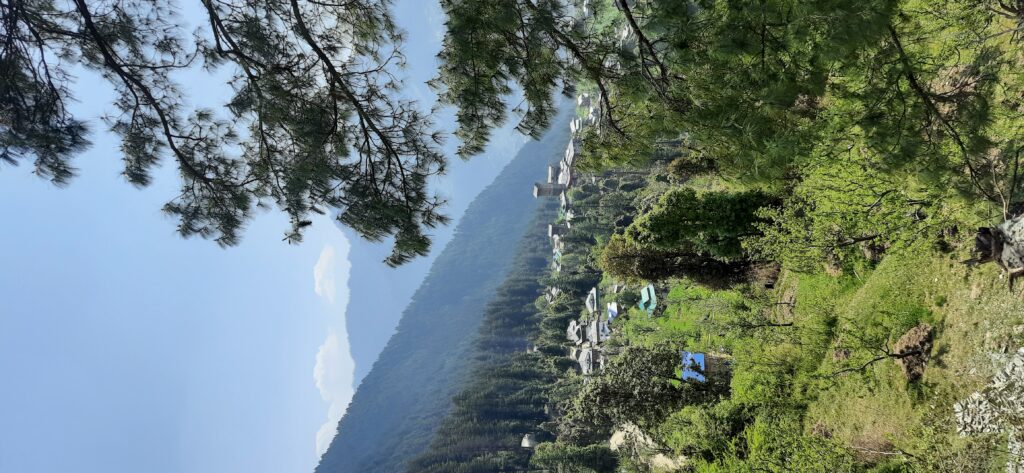
Next morning we discover there is no straight route in the mountains to things in plain sight. We walk through flowering apple orchards and houses with wild rose bushes with paths branching up and down the slopes. We finally hit a dirt track just below Chehni village where an enterprising fellow with a tea stall is now constructing a ‘homestay’ with many rooms. He is going to be ready when the hordes drive up….till then there will be days like today when we have the place to ourselves. Two lost and frightened cows attach themselves, literally, to us, scaring me more. Their pretty owner is chatting with a woman making pattu on a hand loom. The square is deserted save a few boys. A woman with a baby tied to her back, has come to fetch water from the community tap.
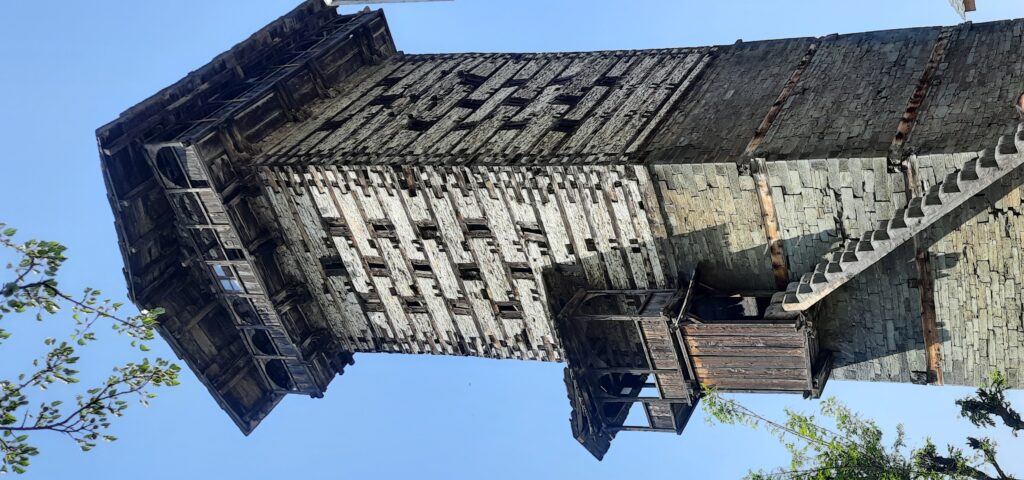
The Kath-Kuni styled tower of Chehni Kothi, with its debatable antiquity, lost some of its floors in the 1905 earthquake apparently. Yet it dwarfs everything around including the Krishna temple behind and another smaller tower in front. It leans ever so slightly. The staircase to the balcony way above is carved out of a single log of wood. The makers, like sure-footed mountain goats, gave no thought to lesser mortals needing support or width. But then outsiders are not allowed to climb up. (scraping them off the floor would be messy!) The temple with carved wooden balconies looks like a mansion which has seen better days. It’s entrance is through a wooden platform jutting out of the structure. There is a courtyard inside but we can’t find the inner sanctum.
Must see mansions are to be found in – Part Two- What Not to Miss on a Weekend Vacation in Shekhawati
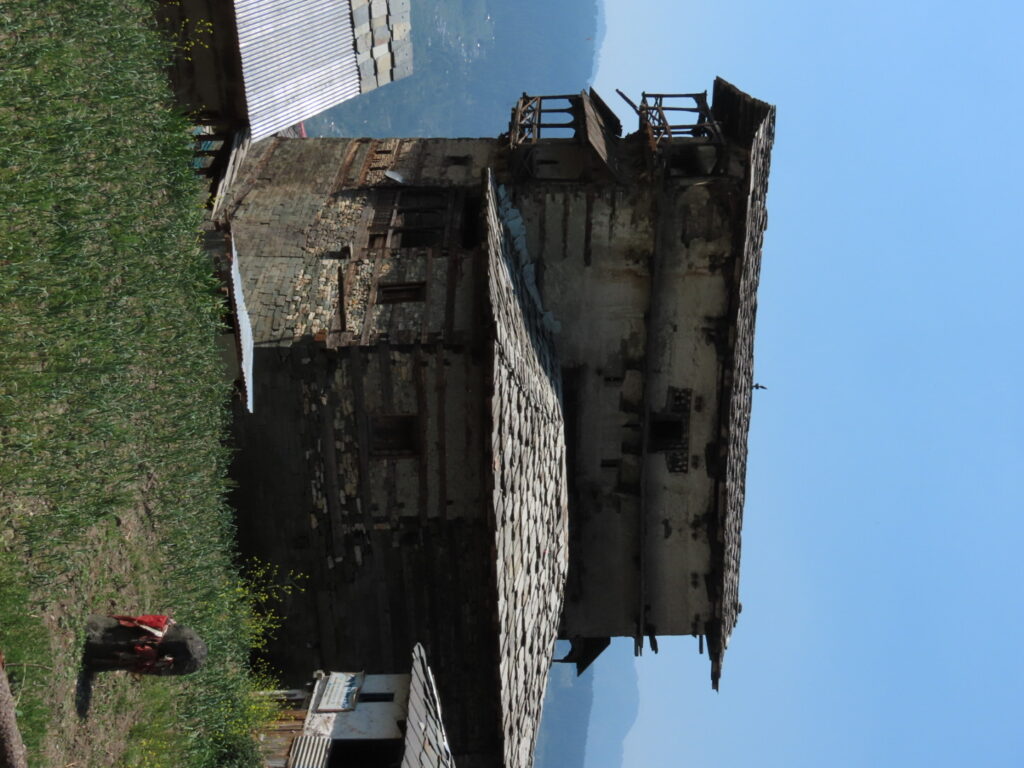
Be Game to Get Lost
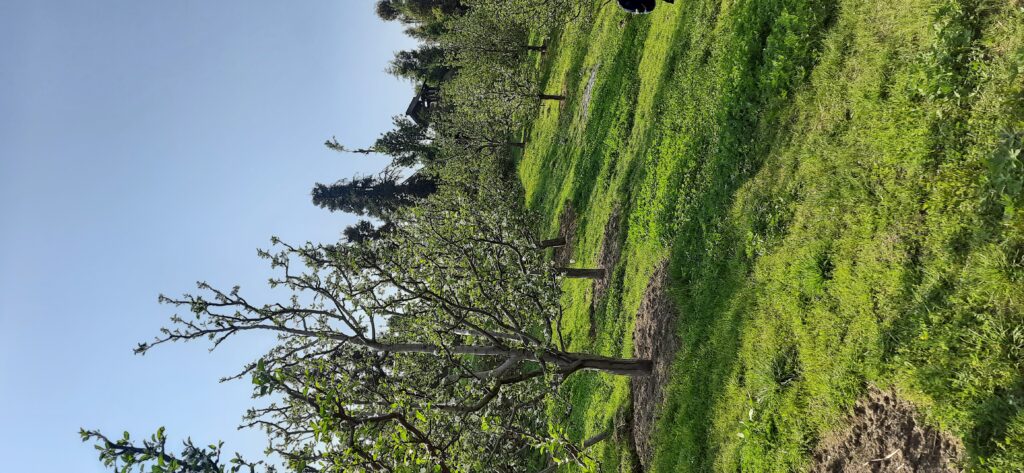
From a makeshift eatery we take packed omelets and walk up to Myaji point. This time we stick to the wide dirt track masquerading as a road. It is lined with apple orchards with wild white and pink lilies growing in the shade. We climb into one to follow two women and their cows across the crest with a small wooden shrine and pond. The white peaks of the inner GHNP form a perfect canvas backdrop.
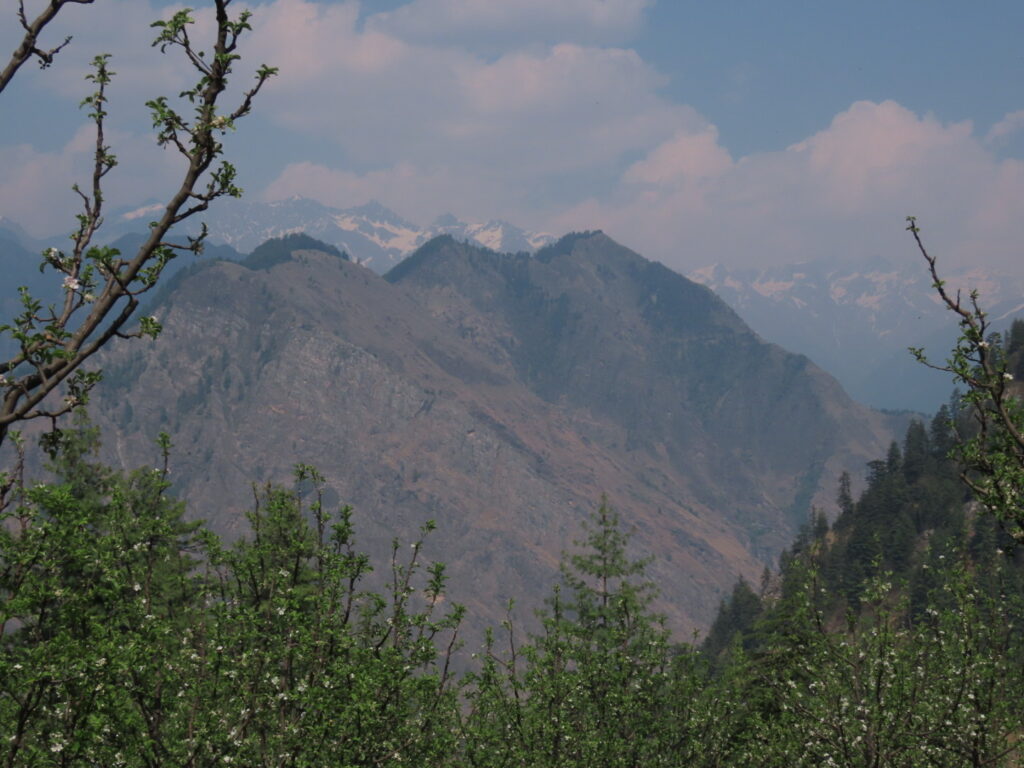
Lunch is followed by a snooze lolling on the grassy slope of an orchard. Its paradise! We rouse ourselves and reluctantly start back with what we think is enough daytime. From the trolley point we see our homestay below and decide to take a shortcut in the general direction of the village. After a promising start we get royally lost. At one point I have to slide down on my backside a few feet. (As opposed to flying face down) A wrong turn to follow a pipeline (has to go to a tap no?) ends in a thicket. Sense prevails; we backtrack and eventually stumble back on to the track going to Bihar. Sweet relief! Hema has thoughtfully made halwa post dinner knowing I have a fast.
Another adventure was- Tarsar Marsar : Memoirs of an Escapade
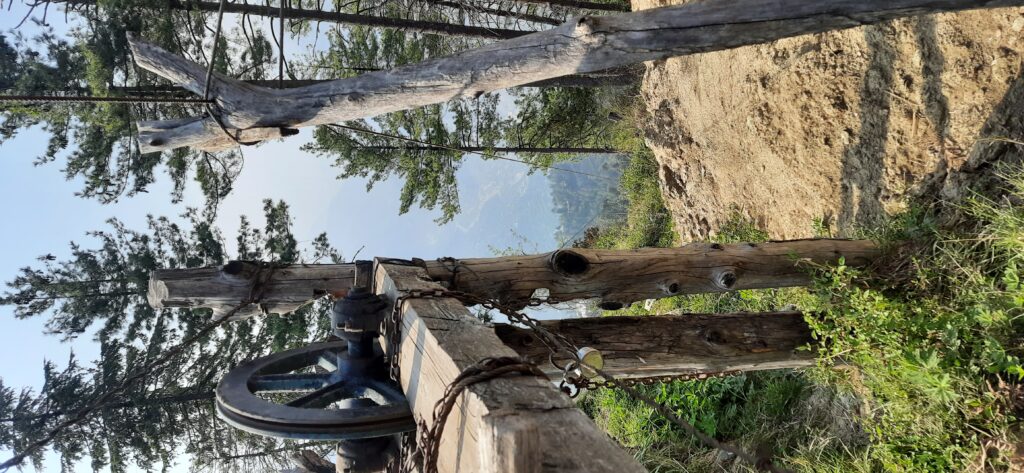
River Run
Early next morning we take a walk on an under-construction road through the deodar forest patch near the village. A fallen tree is being chopped up by the village men and they carry the logs on their backs up to the village to stock up for a feast coming up. Cultural rooting is still strong here and family functions and festivals are community affairs.
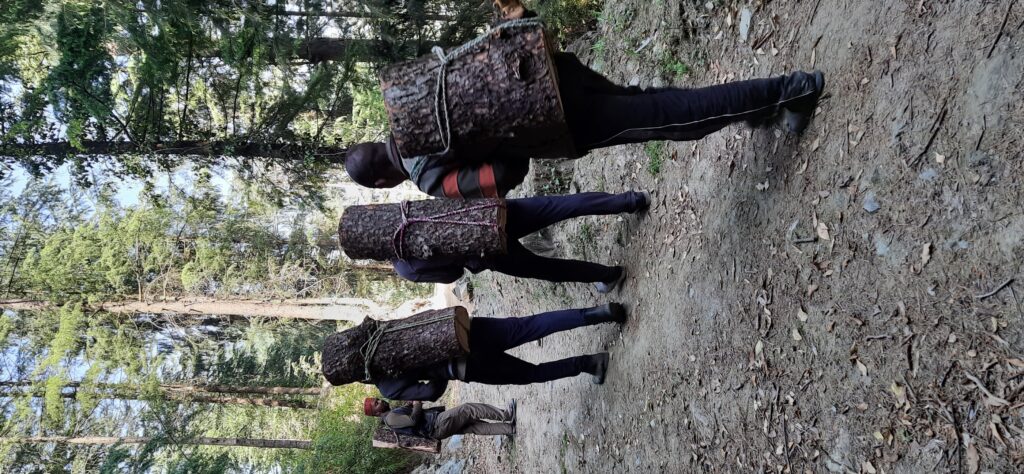
After a hearty breakfast of delicious Siddu drowned in homemade ghee we venture down the mountain to the river. The valley below is overrun with resorts and homestays. We find a deserted stretch where the river cascades over boulders, shimmies into little quiet pools to catch its breath before rushing off again.
Read another river story – Barot and the Serendipitous Catch in the Uhl River
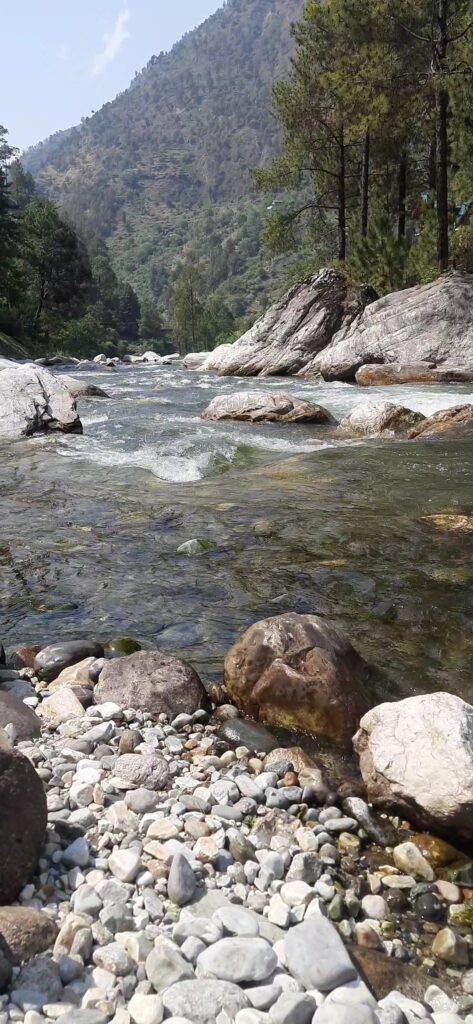
River birds dart around as we chill our feet and drinks in the icy water. Bliss! Later from a hippy café where we lunch we see the sky turn slate grey behind a rugged golden mountainside. Colourful houses at its base make a striking contrast. A brief shower that follows, brings welcome relief from the unusually high temperatures for spring season but it doesn’t douse out the forest fires on the slopes above. Stephen, our host at the homestay has been telling us of the combustible mix of superstition and greed that leads to these fires.
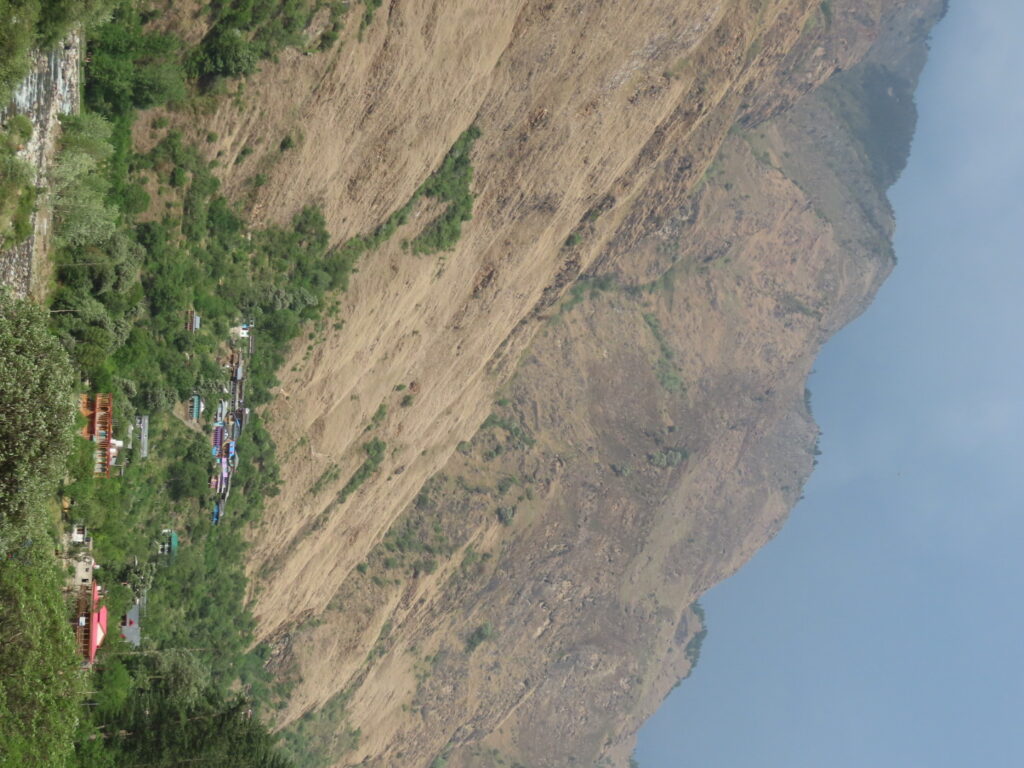
The evenings here have been spent ambling down the road leading to the village. The dusty haze has settled with the afternoon shower and there is a nip in the air. Now that the last bus has thundered back, the road is deserted. A woman walking home offers a cup of tea and I regretfully decline as I try to chase some birds in the dying light. The golden roof of the Shringa Rishi Temple glints in the last rays.
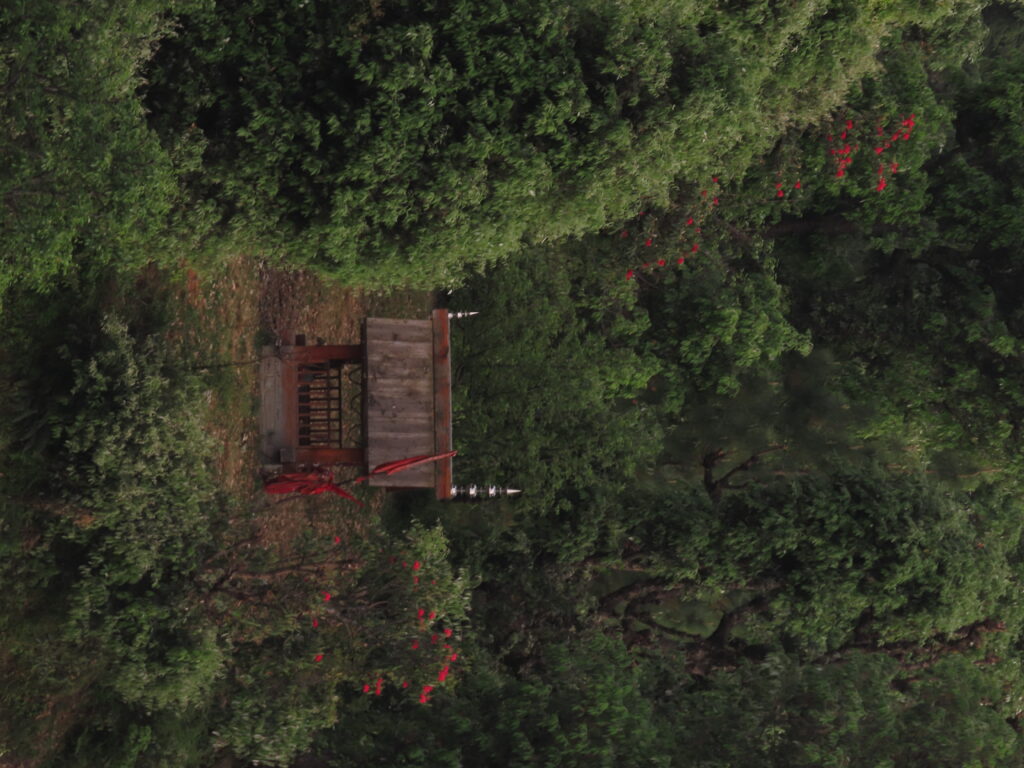
In a clearing below a wooden shrine sits next to flowering rhododendrons. The mountains are silhouetted against an ombre sky. Then as if a switch has been thrown the lights across the valley come on. The night light show is live! It can be magical when man and nature come together in harmony.
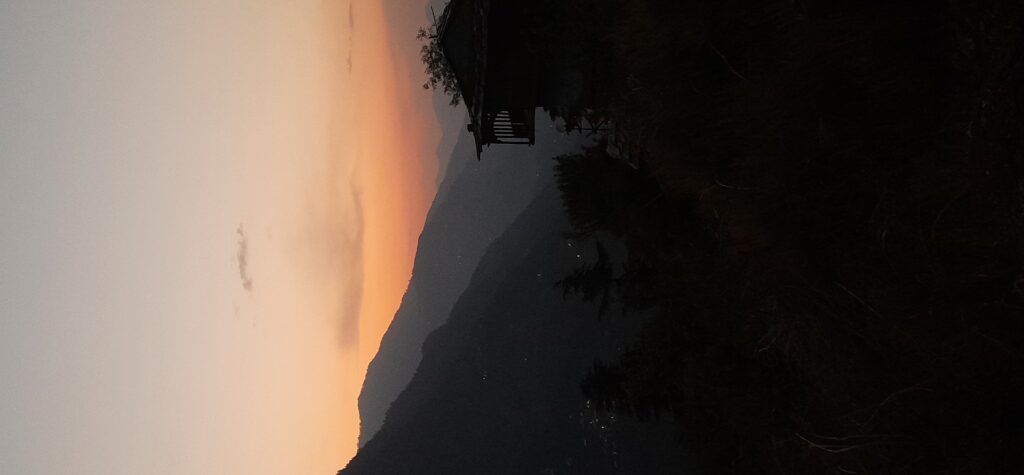
Fact File-
Getting there–
By Road-
a)Take a bus for Manali. Get off at Aut. From Aut there are buses and taxis available for Tirthan.
b) Drive from Chandigarh either through the Shimla or Bilaspur route.
Fly in-
Closest airhead is at Buntar, Kullu
Staying–
We stayed at Hema and Stephen’s home – Tirthan Eagle Nest.
There are resorts, hotels and homestays to suit all budgets.
Conscious travel tips–
Carry your own water bottles.
Eat local produce.
Ask how your hotel/homestay deals with waste.
Carry your plastics back!
